Colombo
Colombo is the de facto capital of Sri Lanka.
The city overall resembles the Indian New Delhi, but there is something indescribably pleasant about it. The streets are wide, there is almost no garbage, and the ocean is nearby.
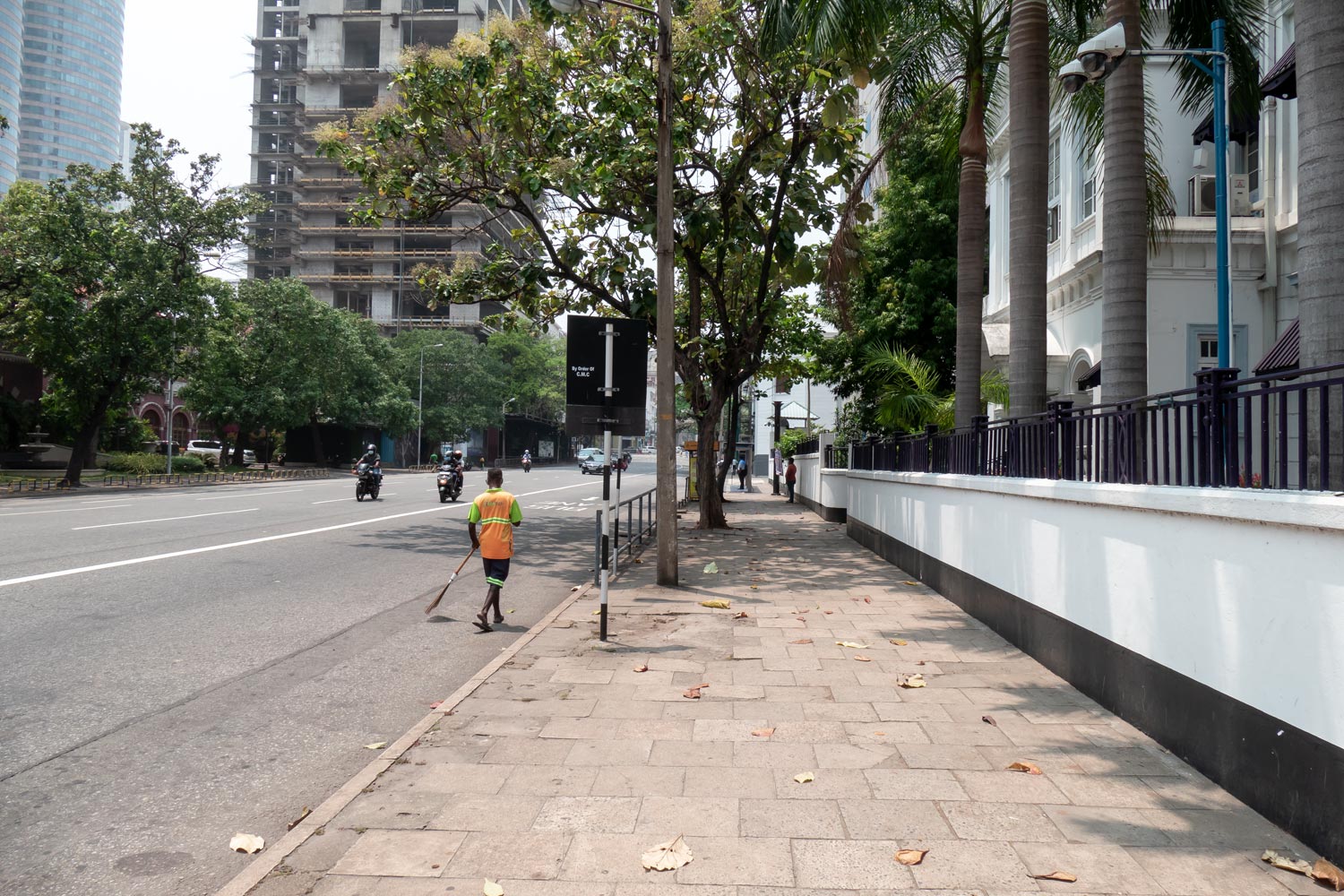
Colombo can be divided into two parts. The first part contains the historical center and government buildings. Here, there is a lot of cool colonial architecture, wide roads, green trees, and normal sidewalks. The second part is where people live.
Let’s first look at the first part. It is called Fort Colombo and is separated from the rest of the city by a small moat.
Fort Colombo
Right away, you come across a monstrously steep colonial house. Judging by its appearance, it was built somewhere in the 1920s. The sign reads: “Lankem Plantation House”. It houses the office of Lankem Ceylon — the largest fertilizer producer. The company was founded in 1964 and is owned by the British oil giant Shell.
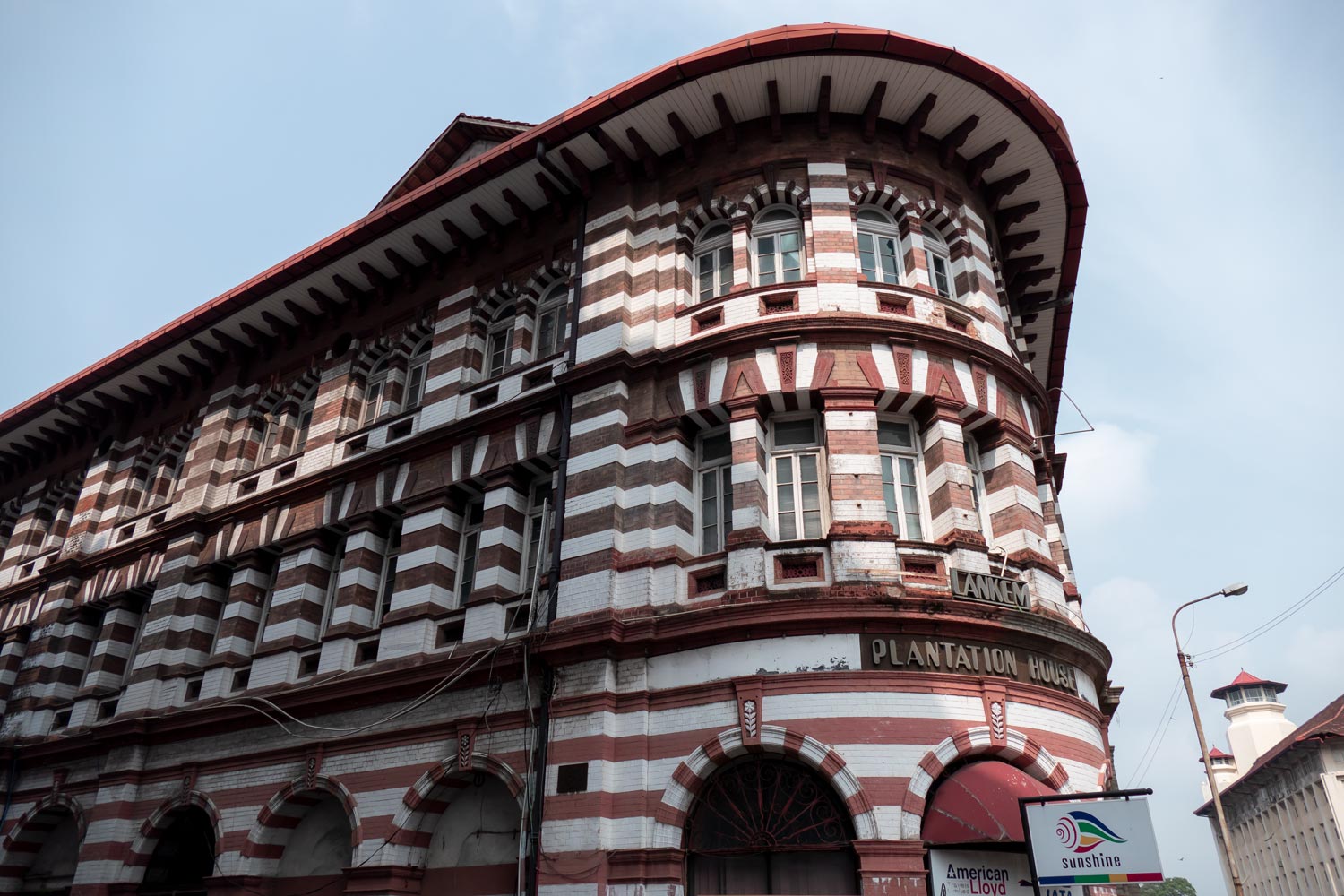
Opposite it stands another magnificent mansion built in 1906, belonging to the firm Cargills Ceylon.
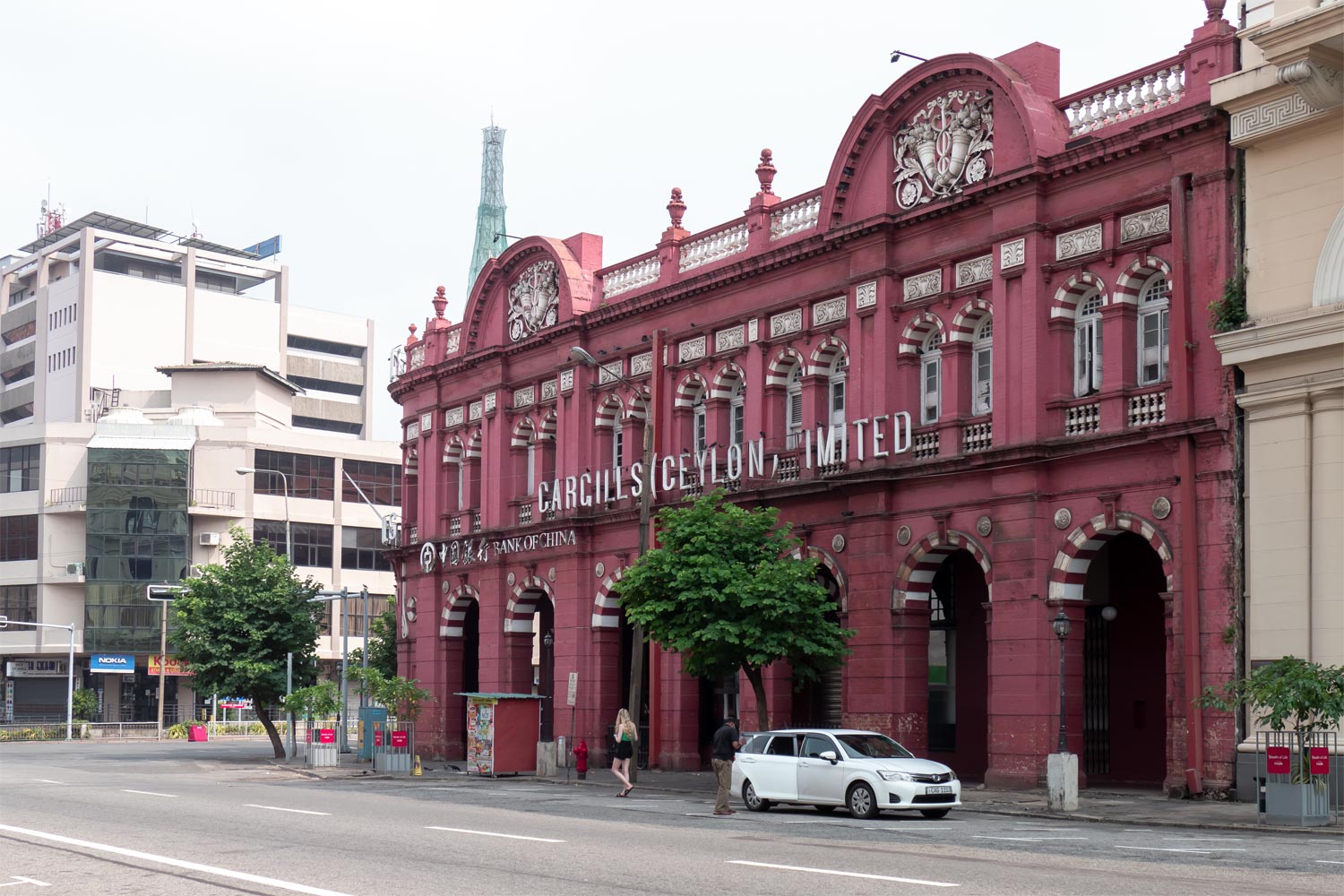
This company is much older. It was founded in 1844. Their product network covers all of Sri Lanka. The service at Cargills stores is top-notch. Each store has a concierge who opens the door for visitors. I even initially thought it was a British brand.
The building is partially vacant. However, fantastic 19th-century signs have been preserved on it!
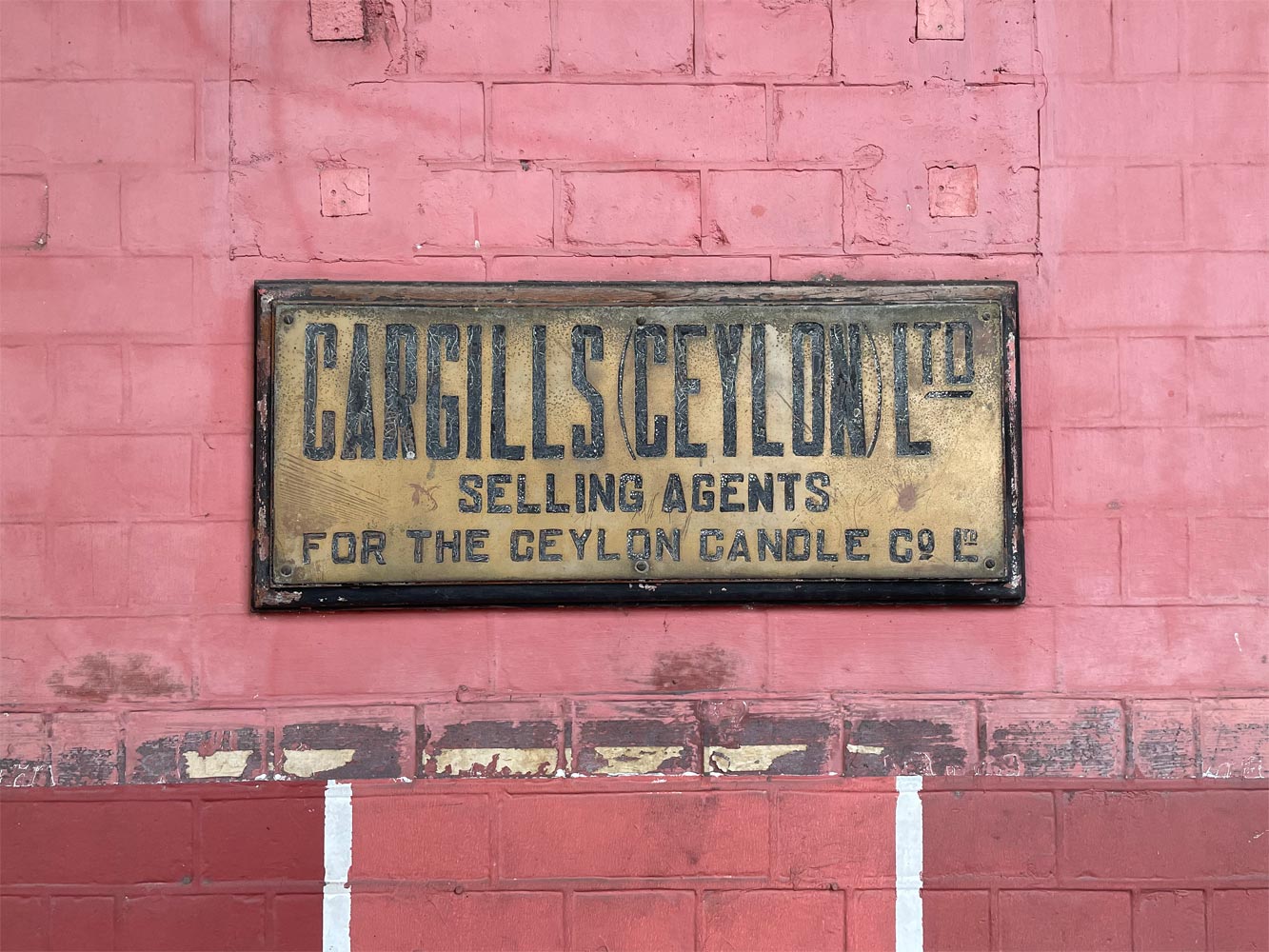
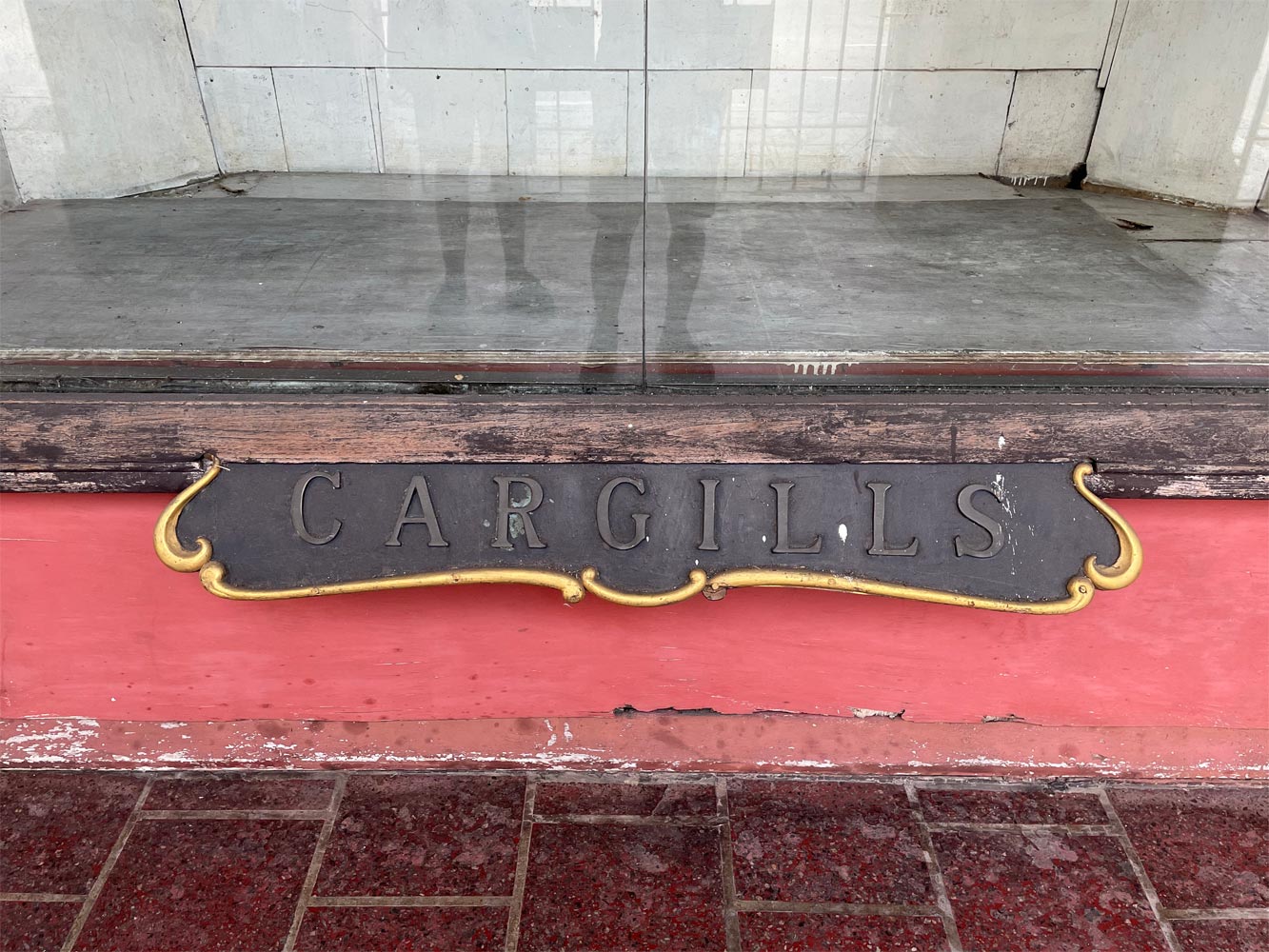
A true piece of colonial Britain.
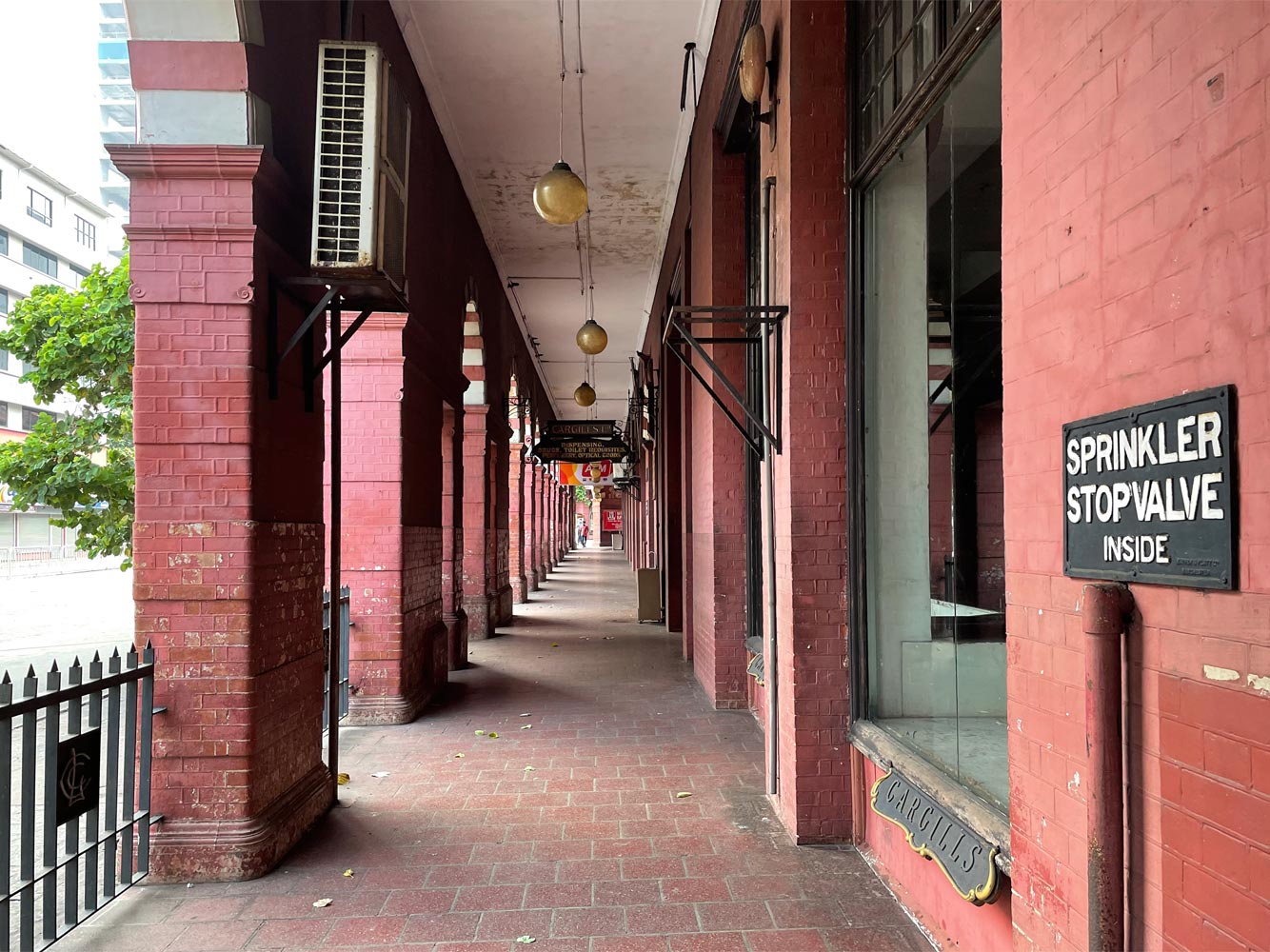
An absolutely stunning five-story house built in 1908 in the rare Georgian style. It currently houses the cabinet of ministers of Sri Lanka.
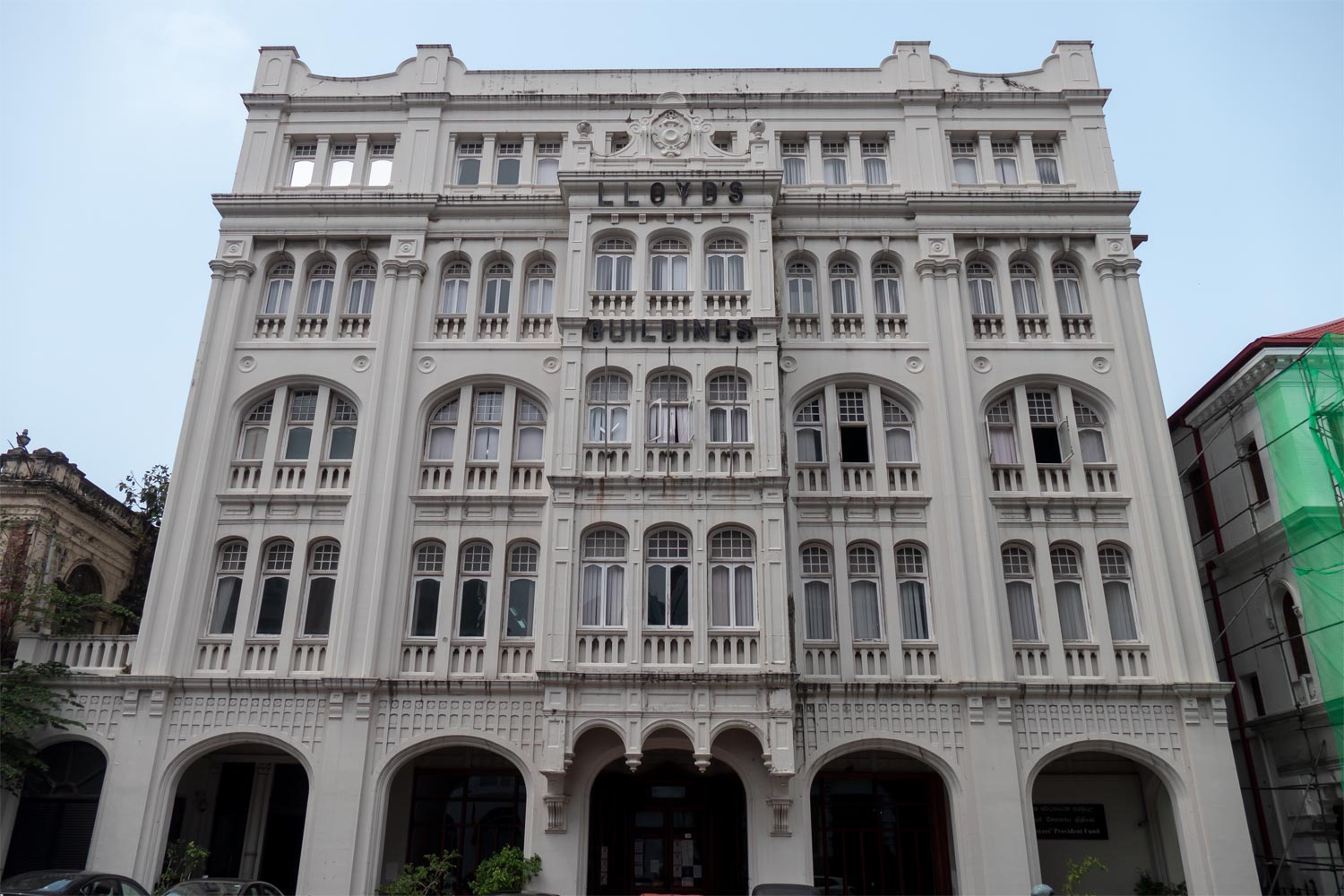
Colombo is a real find. Some buildings not only have been preserved remarkably well since the colonial times, but you can also go inside them! For example, the building of the old British main post office, built-in 1895.
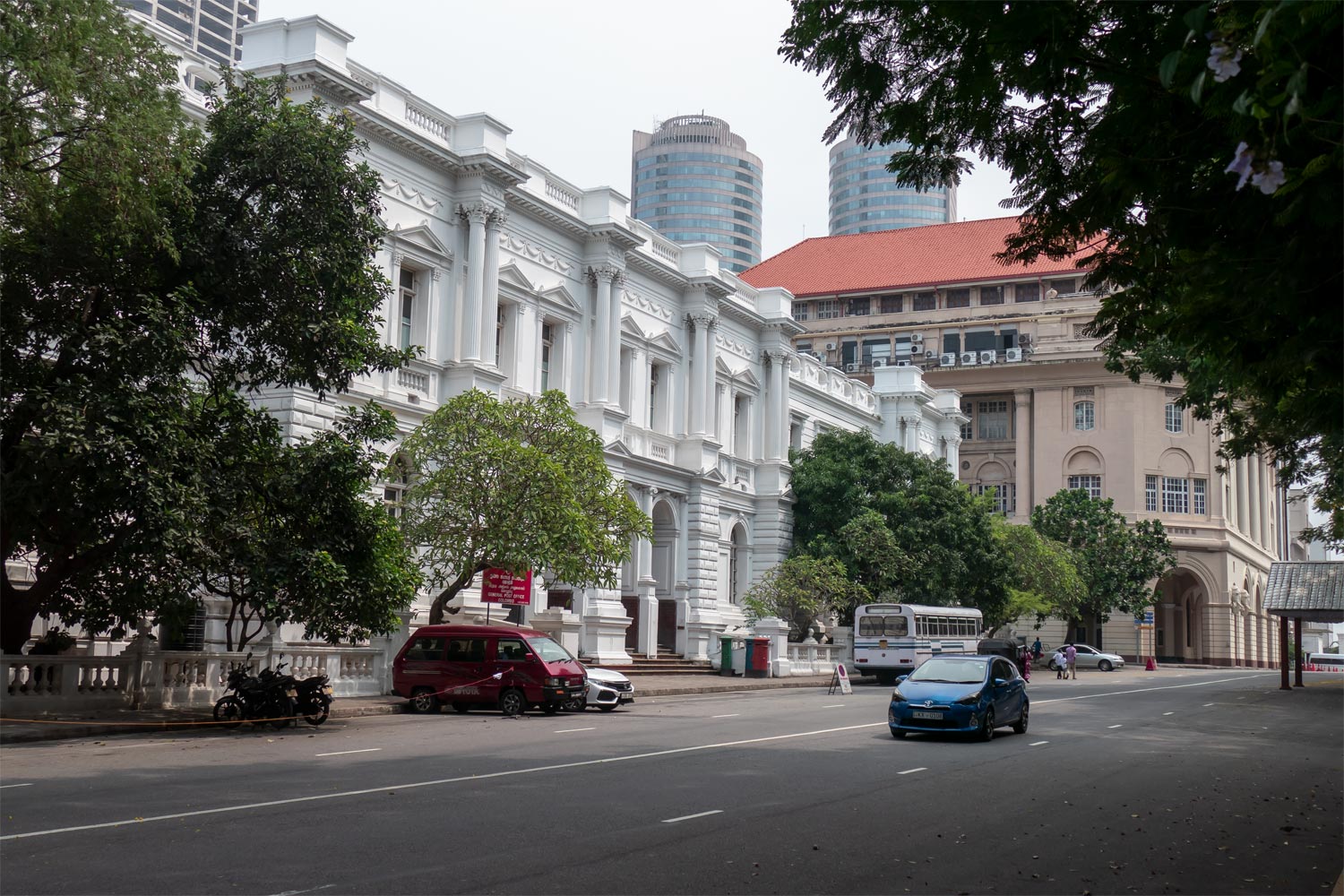
Inside, the interior looks as if it hasn’t been touched since the 19th century.
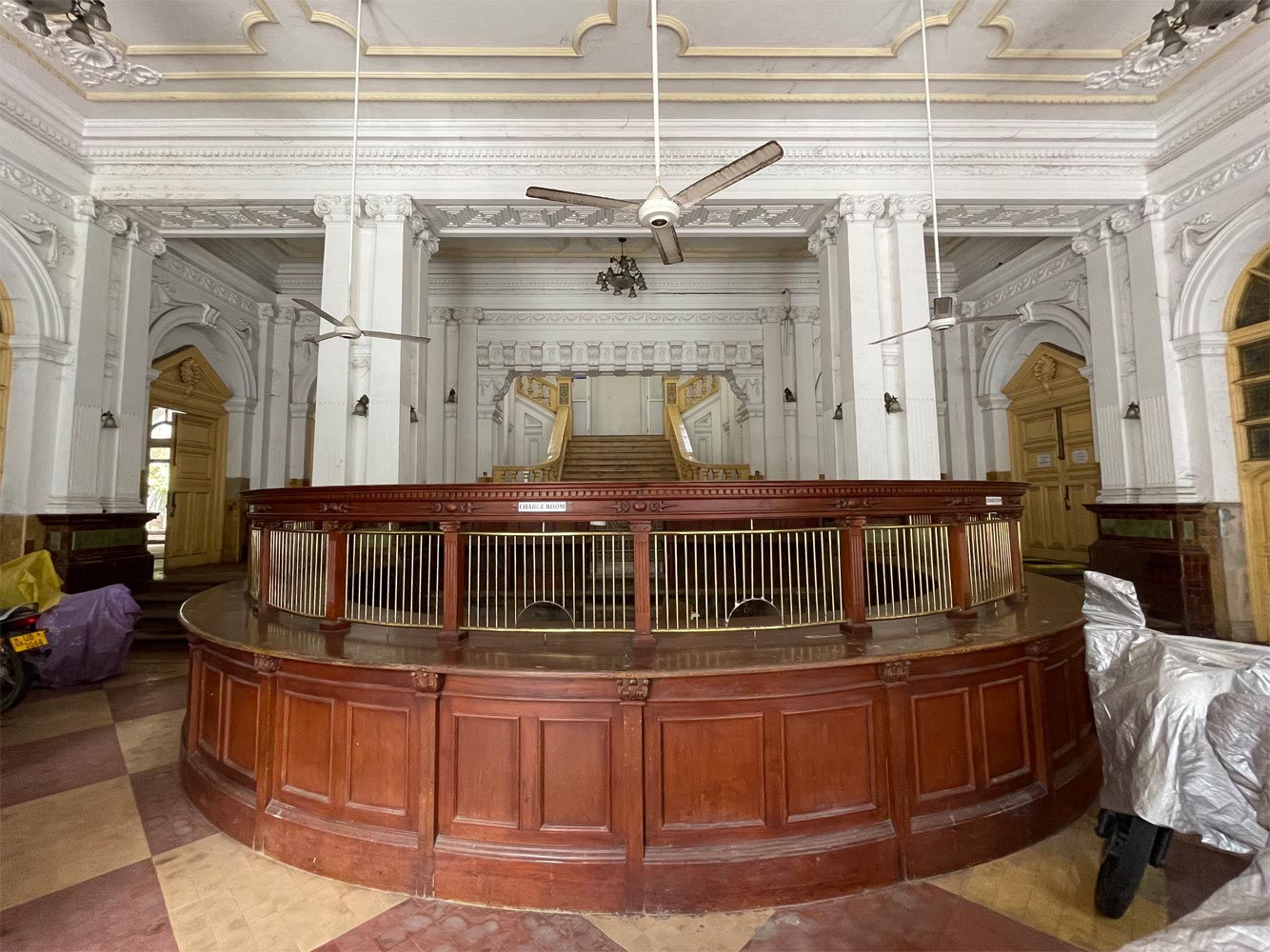
Fantastic.
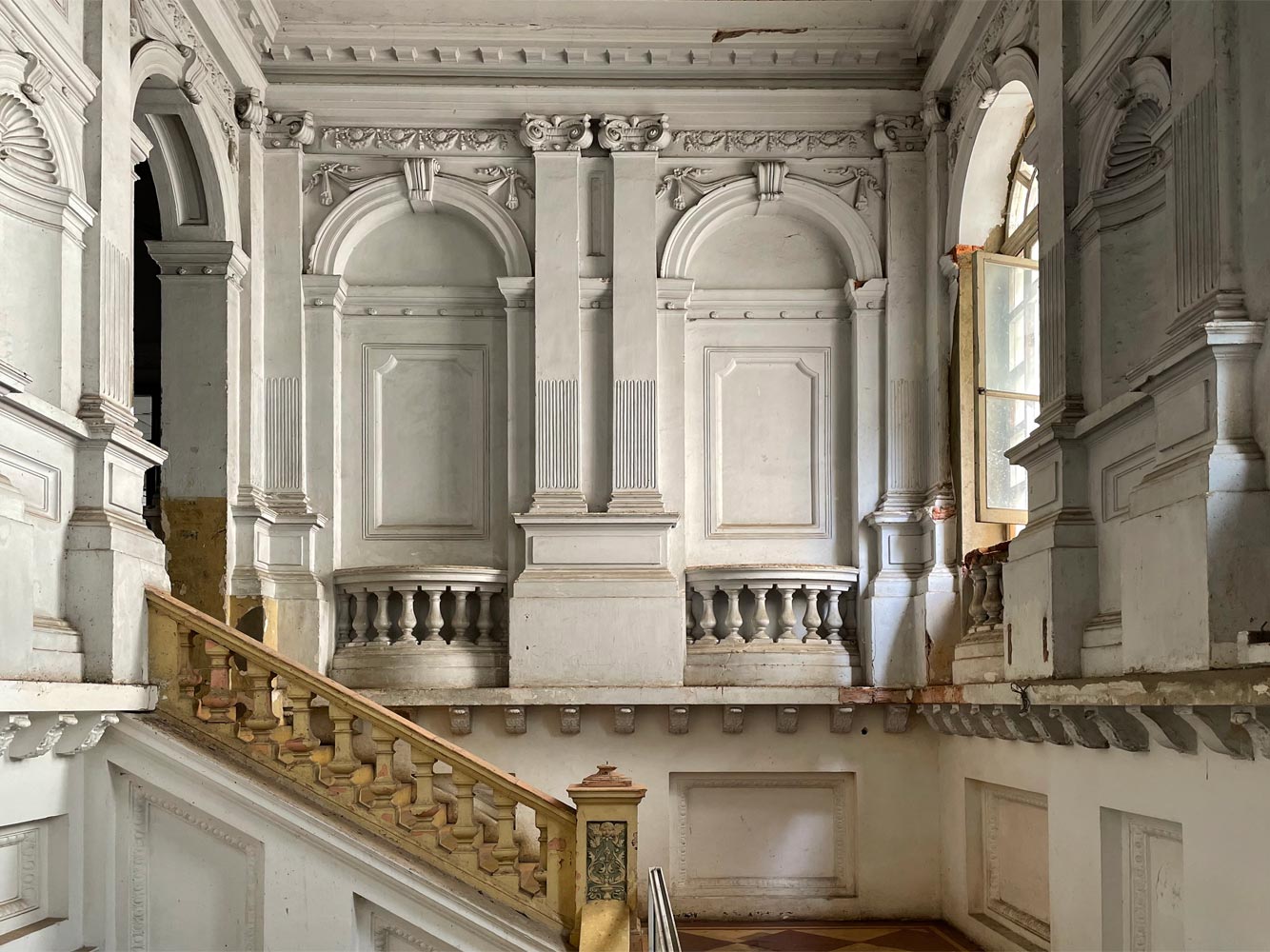
Of course, the post office needs a good repair. But all of this can be restored. The main thing is not to destroy it as part of some renovation.
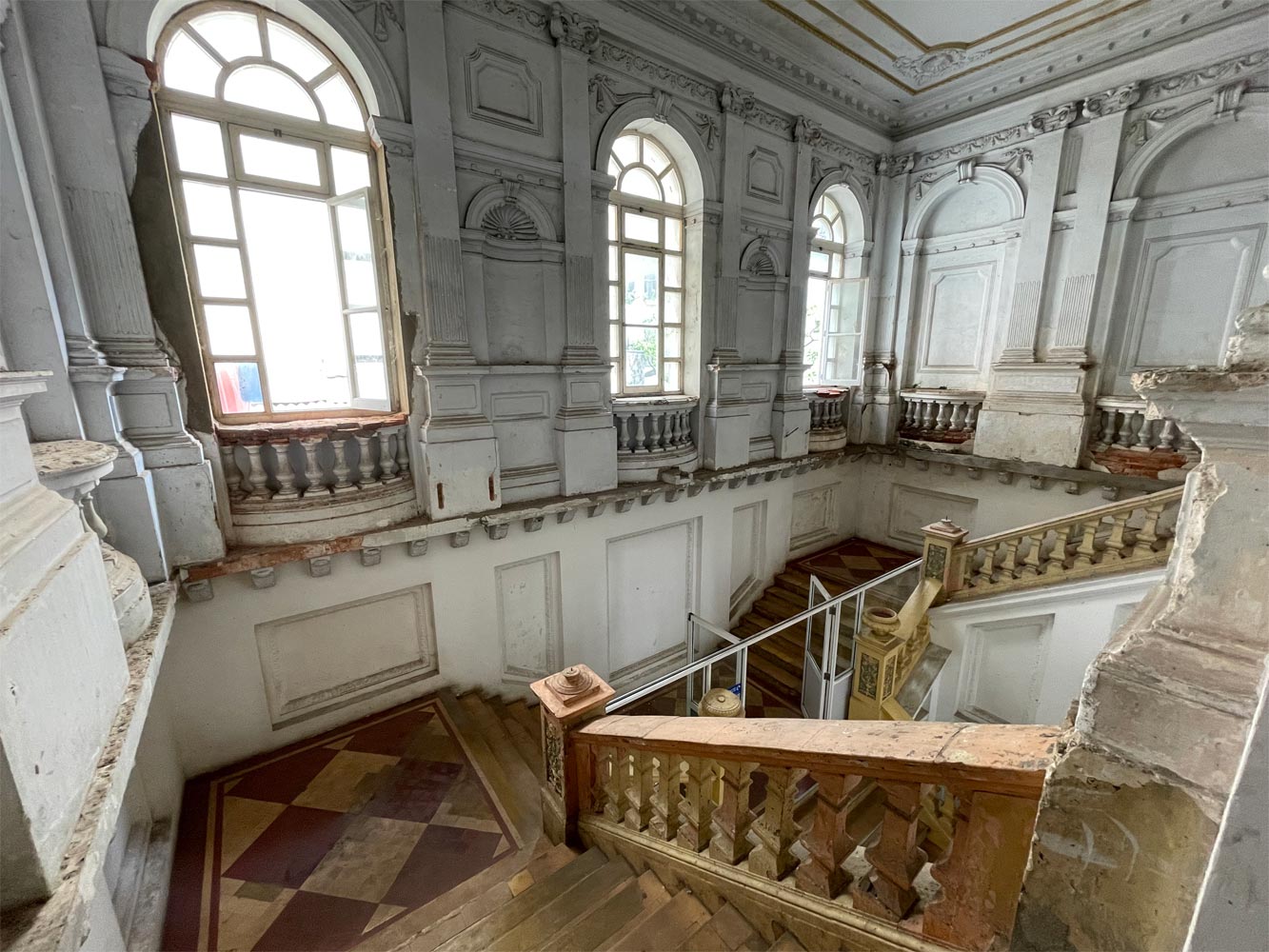
Otherwise, someone has already started parking motorcycles inside.
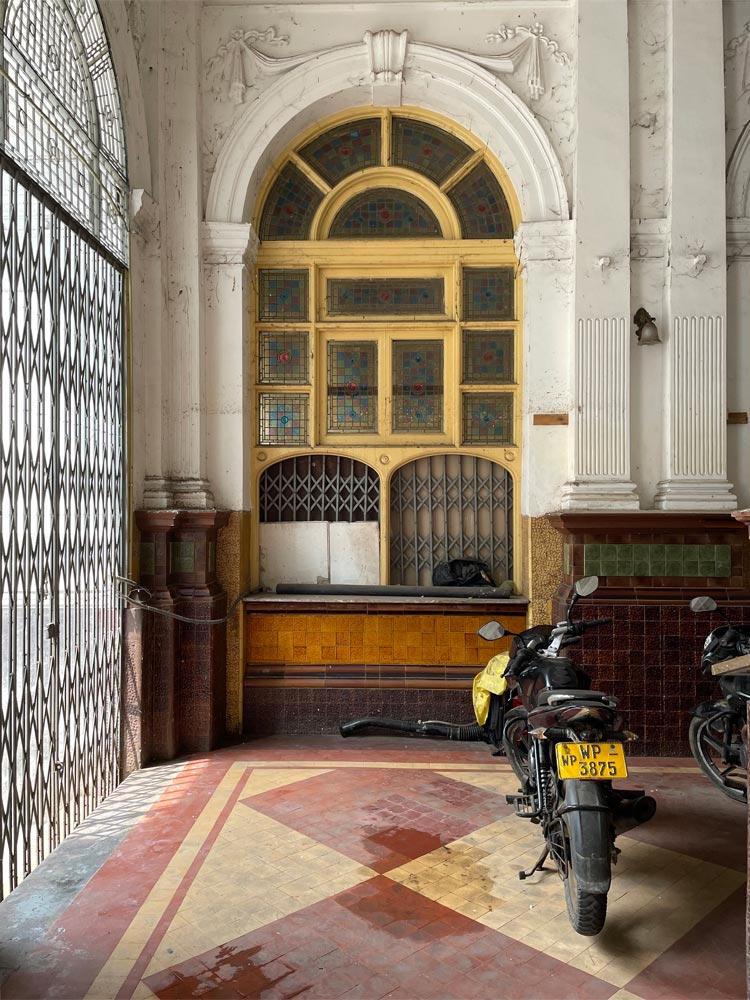
Fort Colombo is rich in details no worse than London. You walk along, and suddenly — elephant heads stick out of the wall.
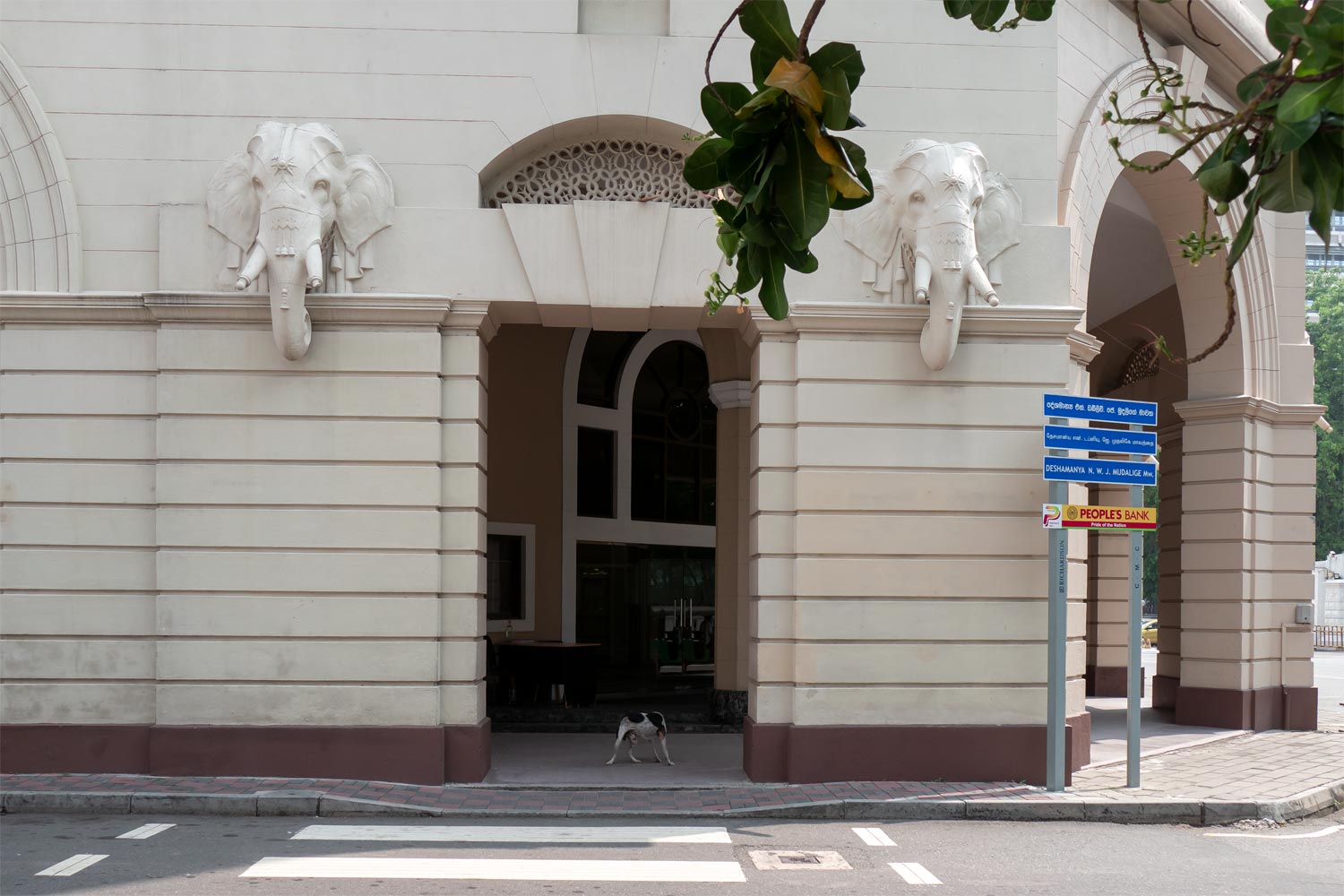
Or in the middle of heavy office buildings, there is a small Buddhist temple.
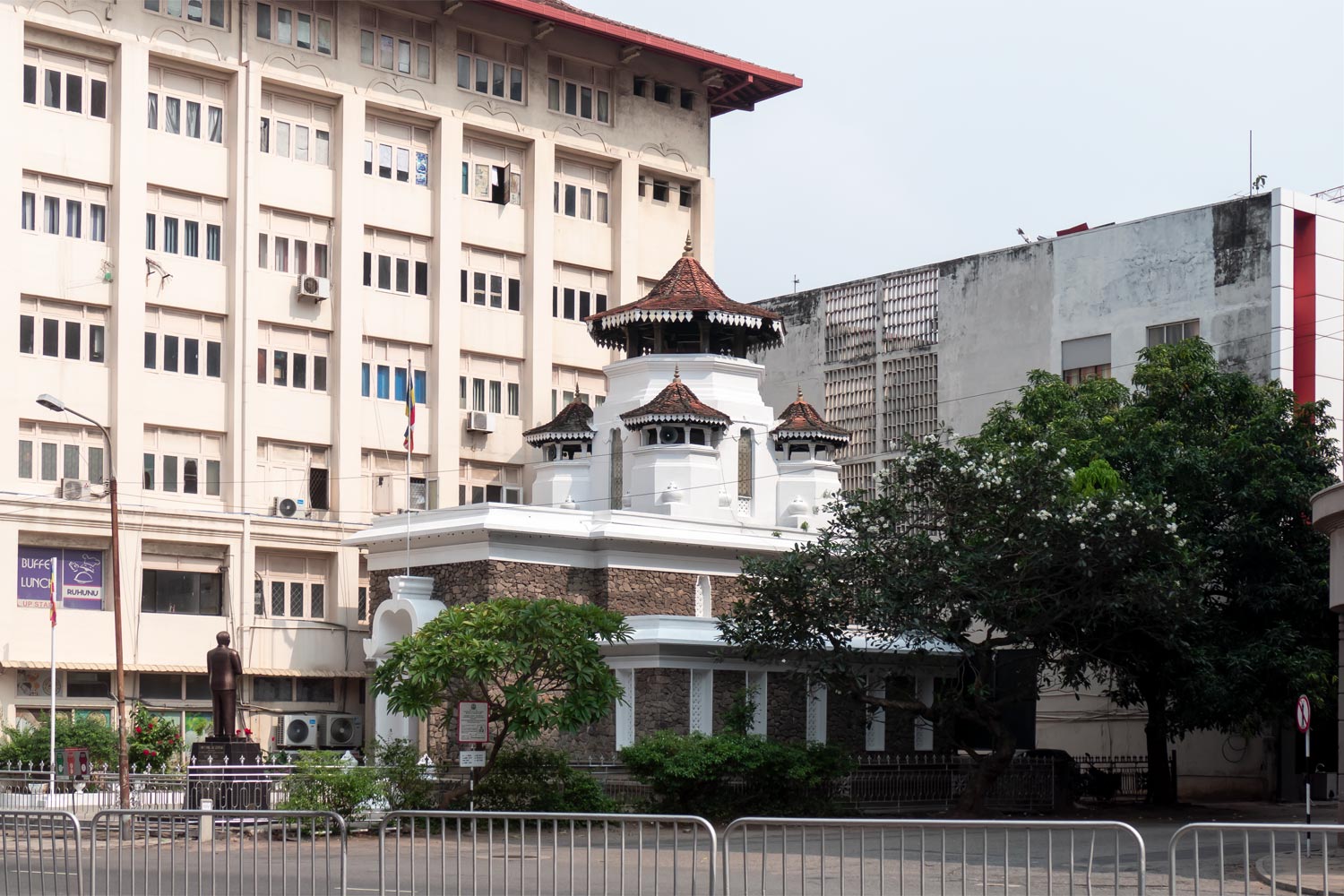
The dome of the mosque is designed in the form of a rotunda, supported by separate columns. I have never seen anything like it.
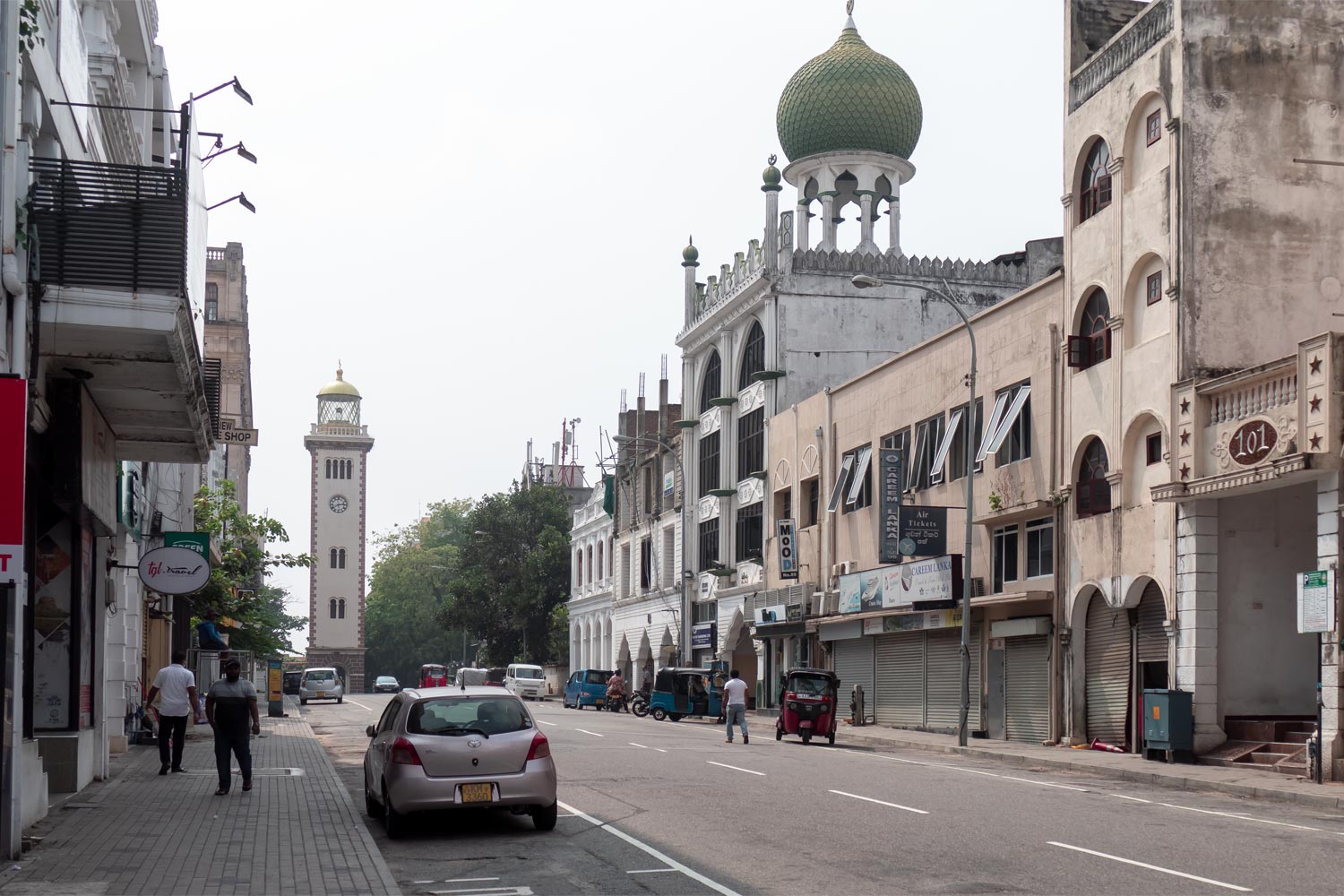
The clock tower turns out to be an old lighthouse. The tower was built in 1857, and it served as a lighthouse for almost a hundred years. By that time, Colombo had been built up, and the lighthouse’s light began to enter the apartments of residents. Therefore, it was decided to turn off the lighthouse permanently.
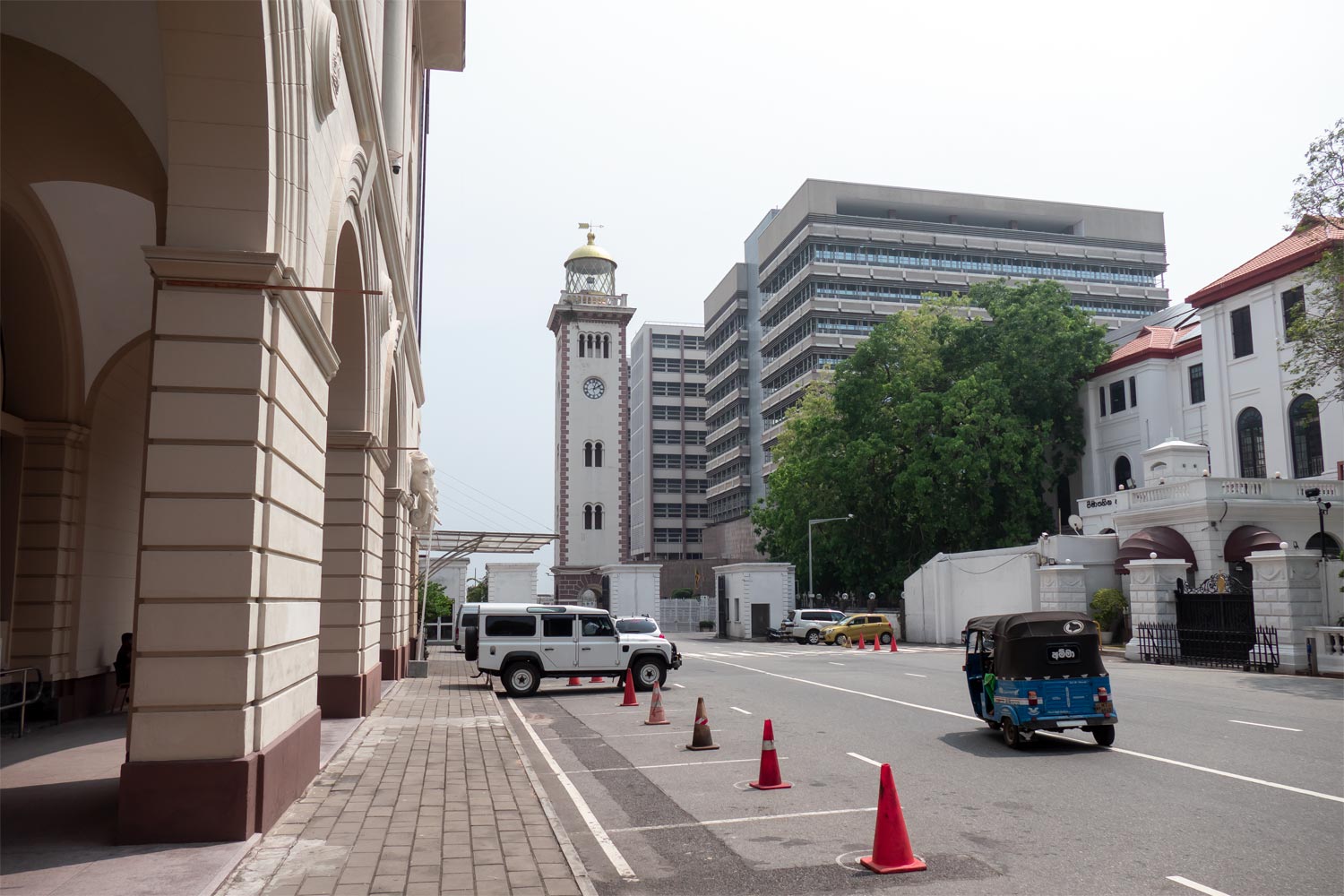
Not far from the lighthouse is the very center of Fort Colombo. This is the old parliament building, built by the British in 1930. It now houses the office of the President of Sri Lanka.
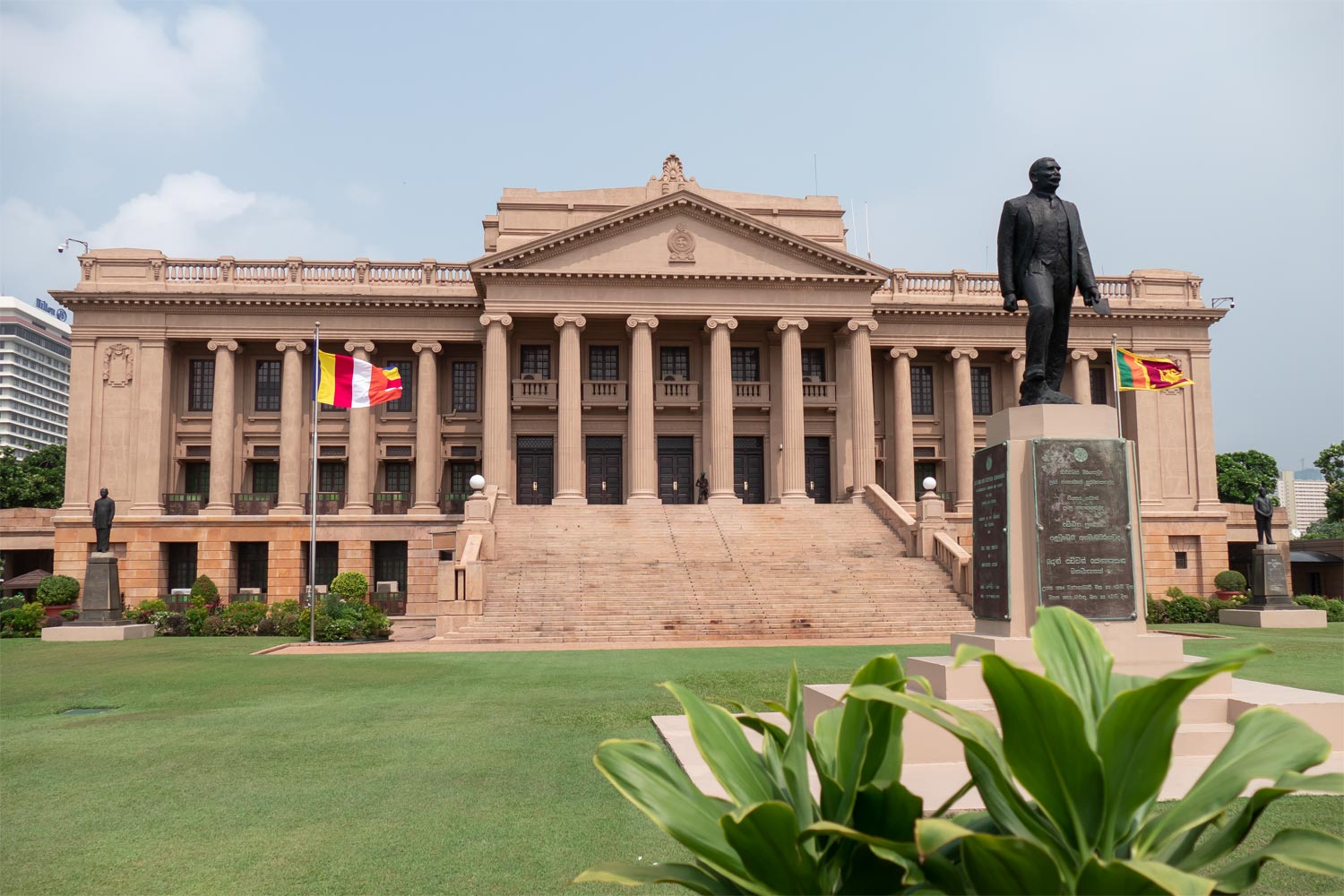
From the side of the parliament, there is an excellent view of the skyscrapers of Colombo.
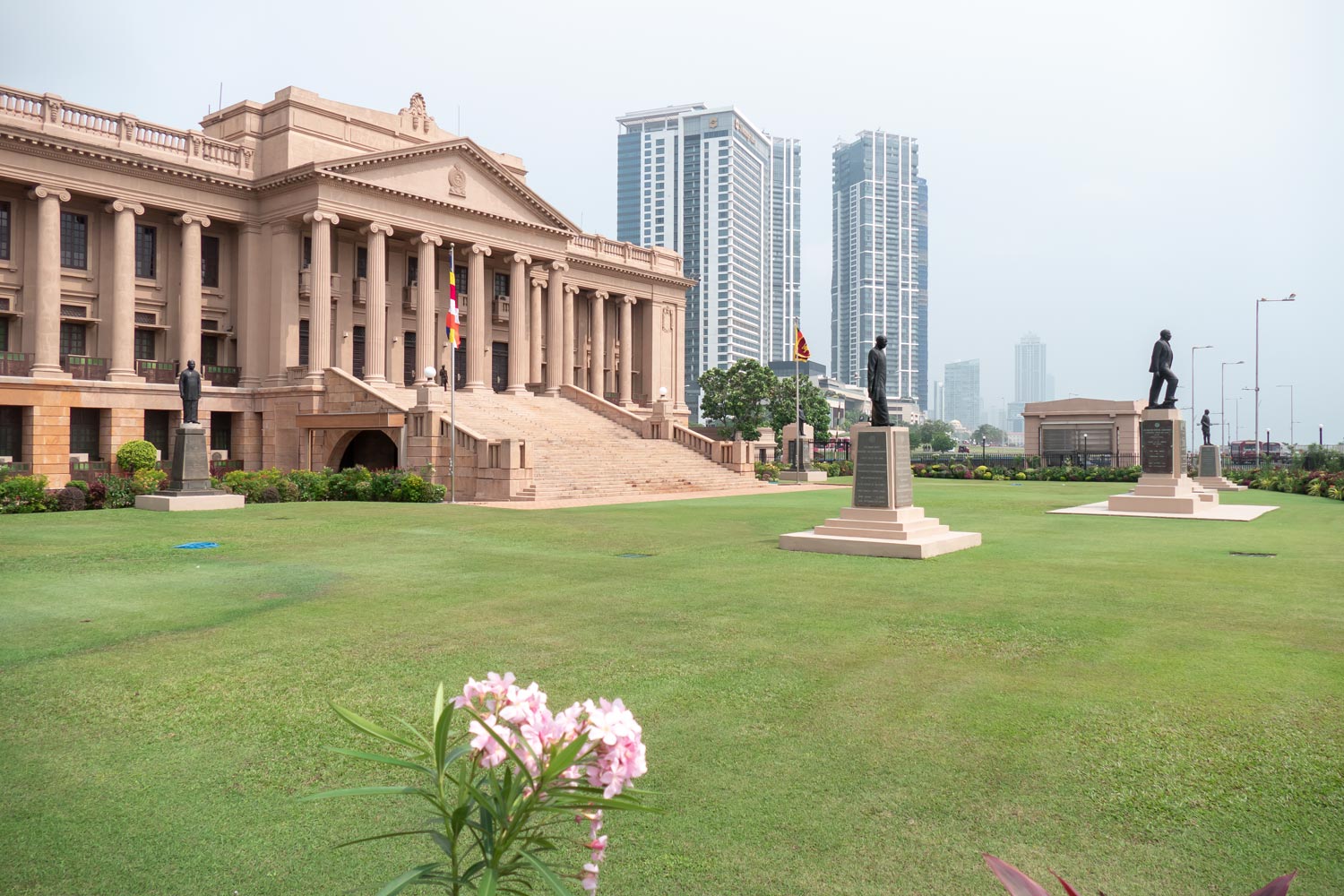
There are quite a few skyscrapers for an Indian city. In general, throughout Colombo, they add up to a small business district. Soon there will be many more skyscrapers: a huge area has already been allocated nearby for the future downtown.
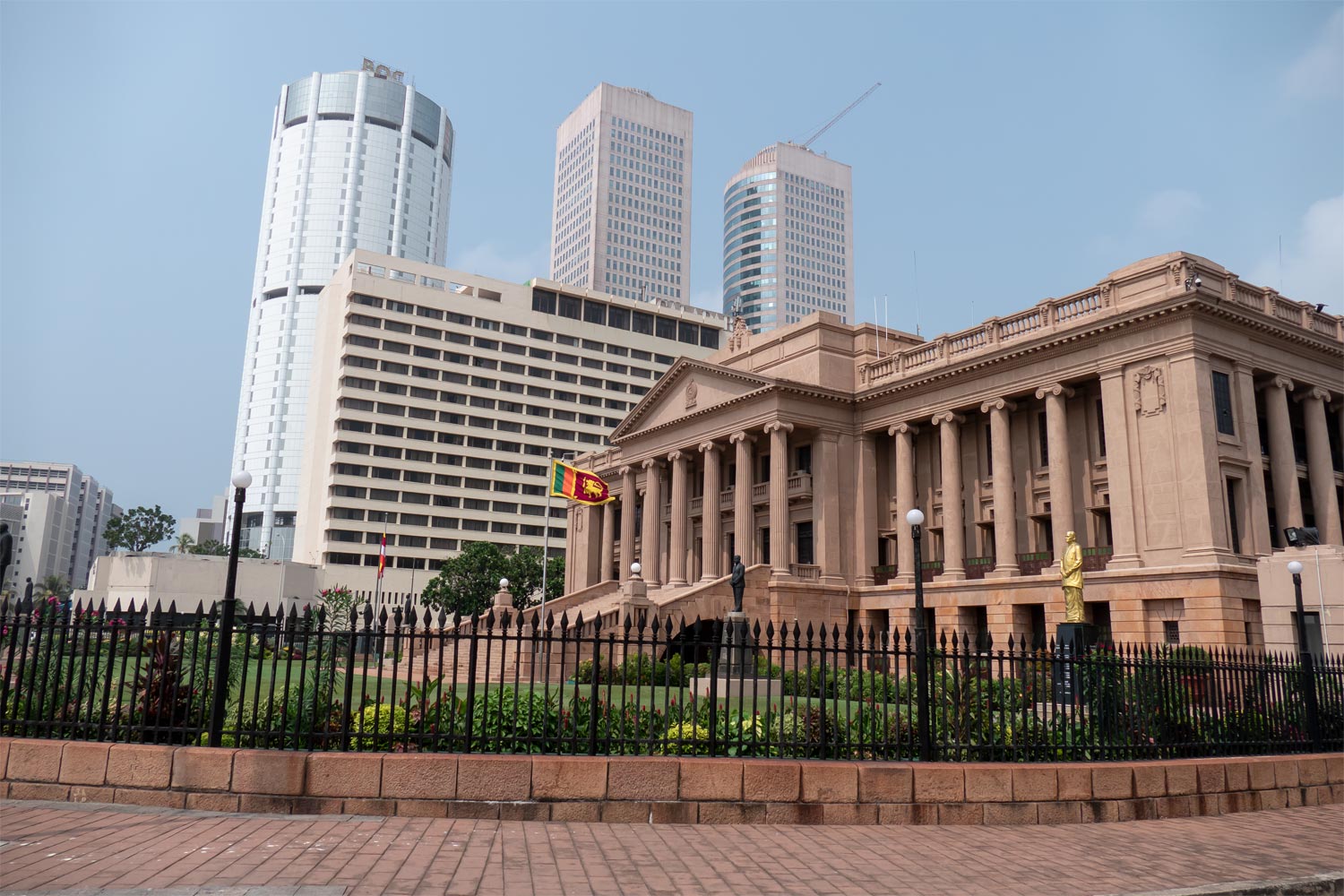
And there is also a television tower in Colombo. It is always hazy due to poor air quality.
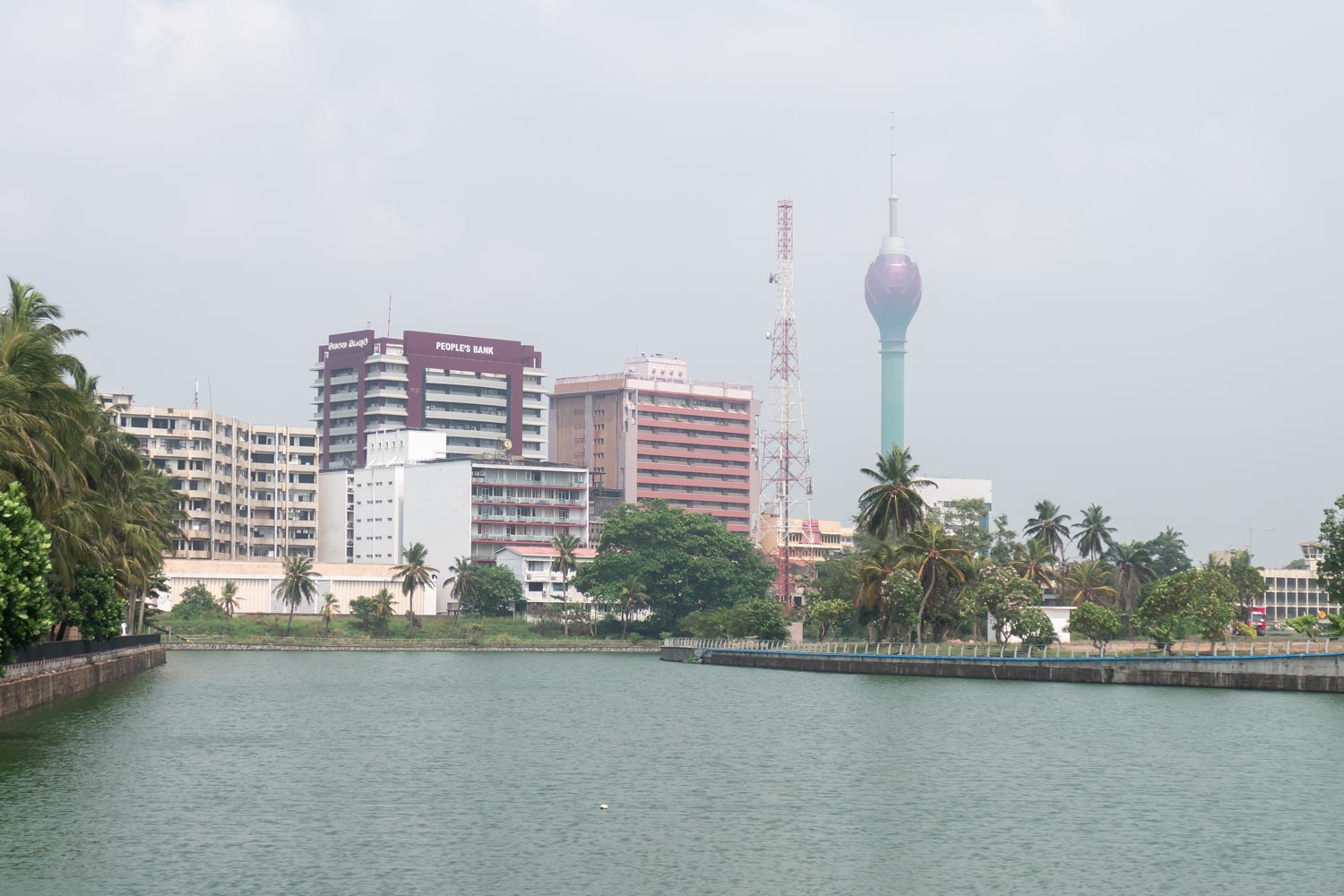
This is the beautiful Lotus Tower, designed in the form of a lotus flower.
Residential areas
Residential quarters of the Pettah district begin after the clock tower.
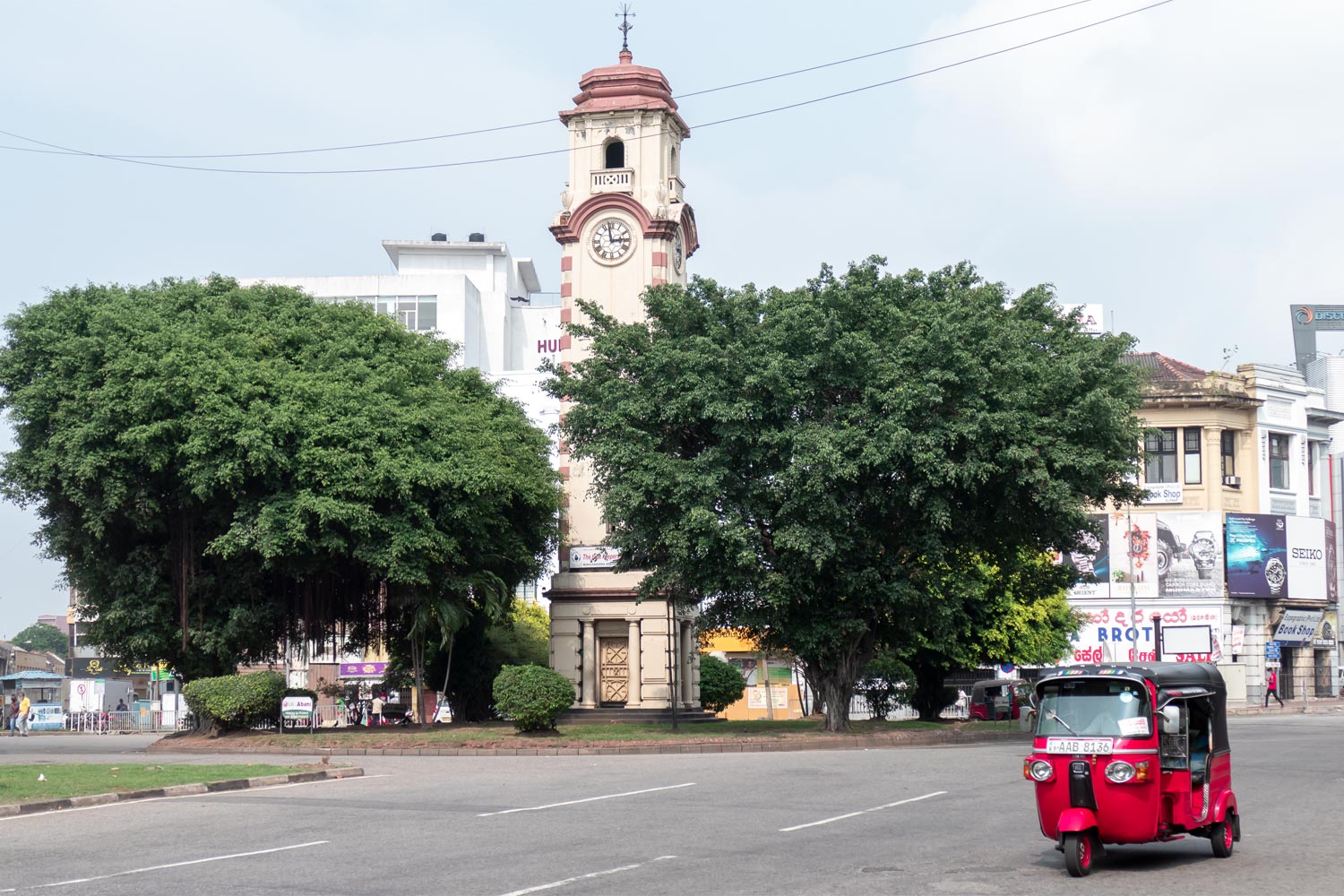
Pettah is quite a decent place by Asian standards. The district grew out of a bazaar. Now there are a lot of shops, business centers, and offices here.
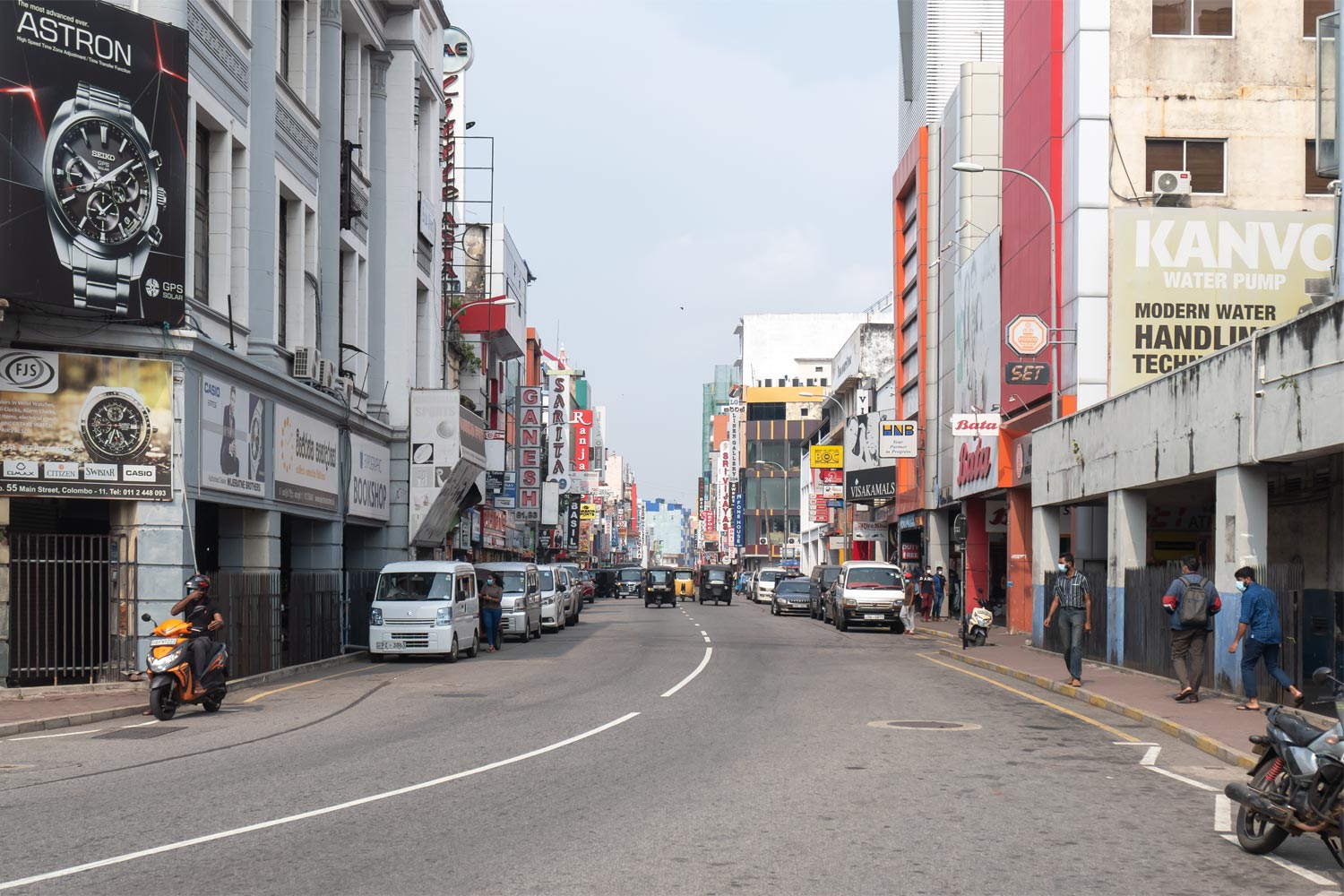
It has a slight shade of provincial cyberpunk. Bangkok for the poor.
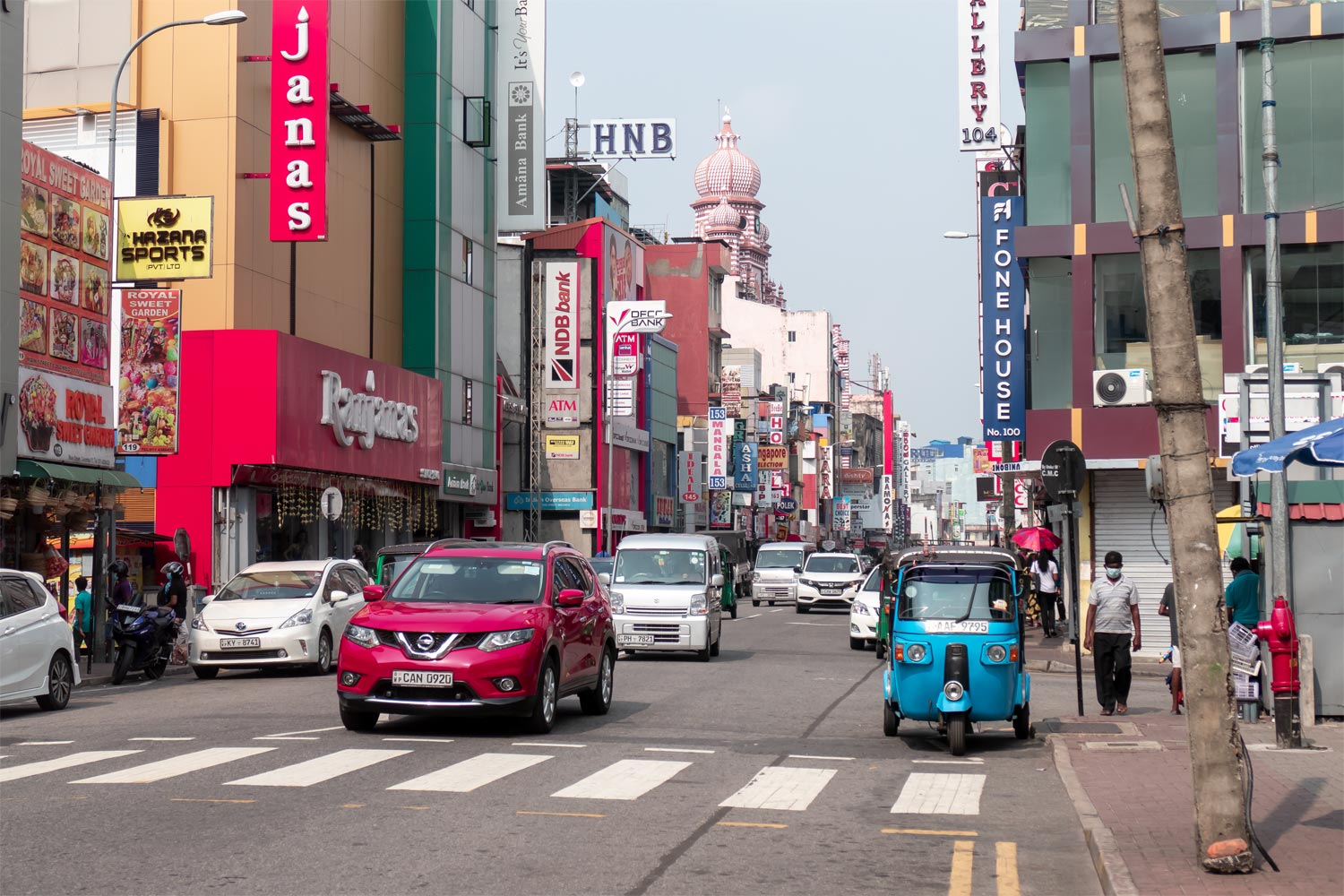
The first floors are filled with endless shops. Here you can buy anything you want. There is no shortage of anything if you have money.
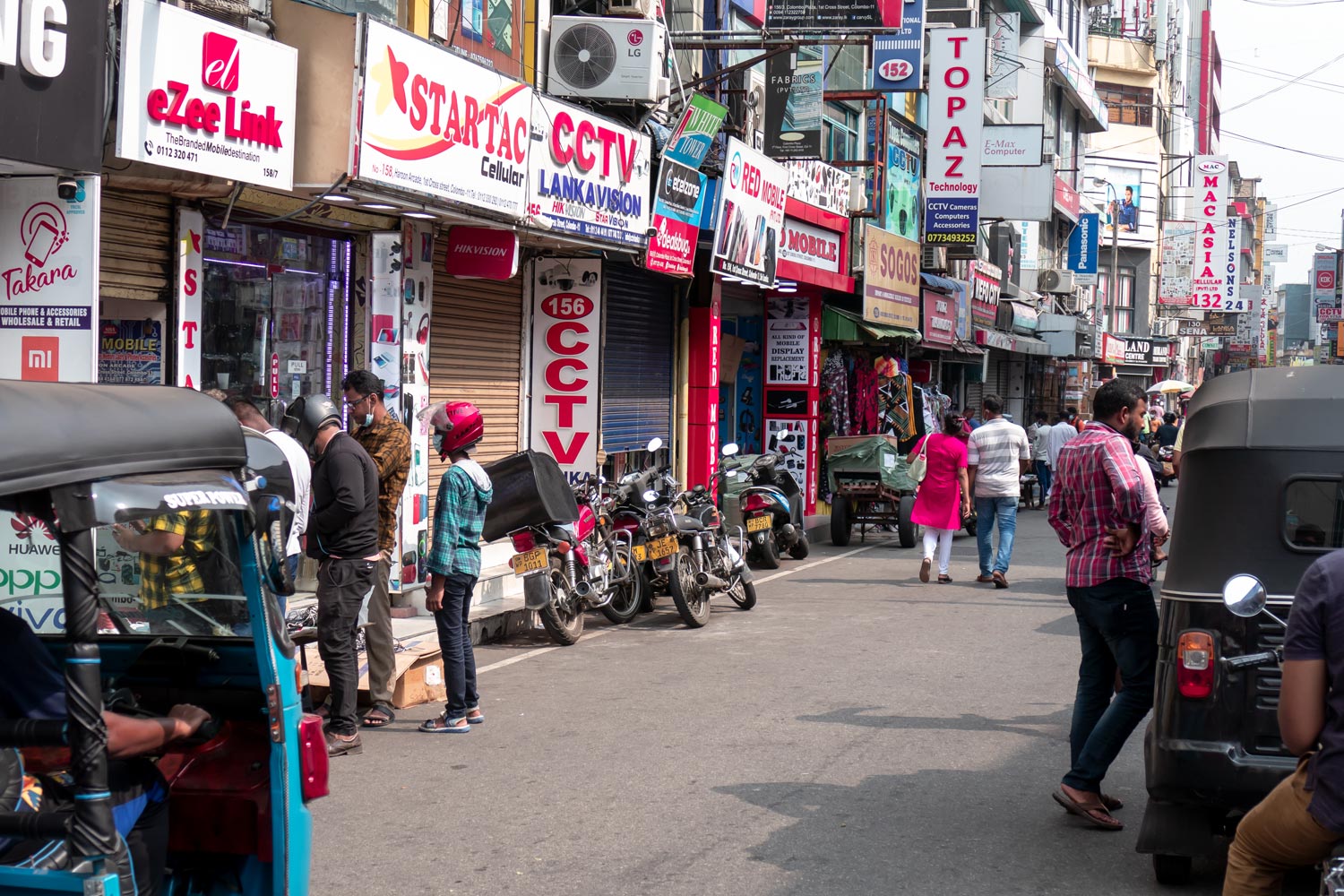
Like in New Delhi, it is simply impossible to walk in Colombo. The roads are completely clogged with damned tuk-tuks.
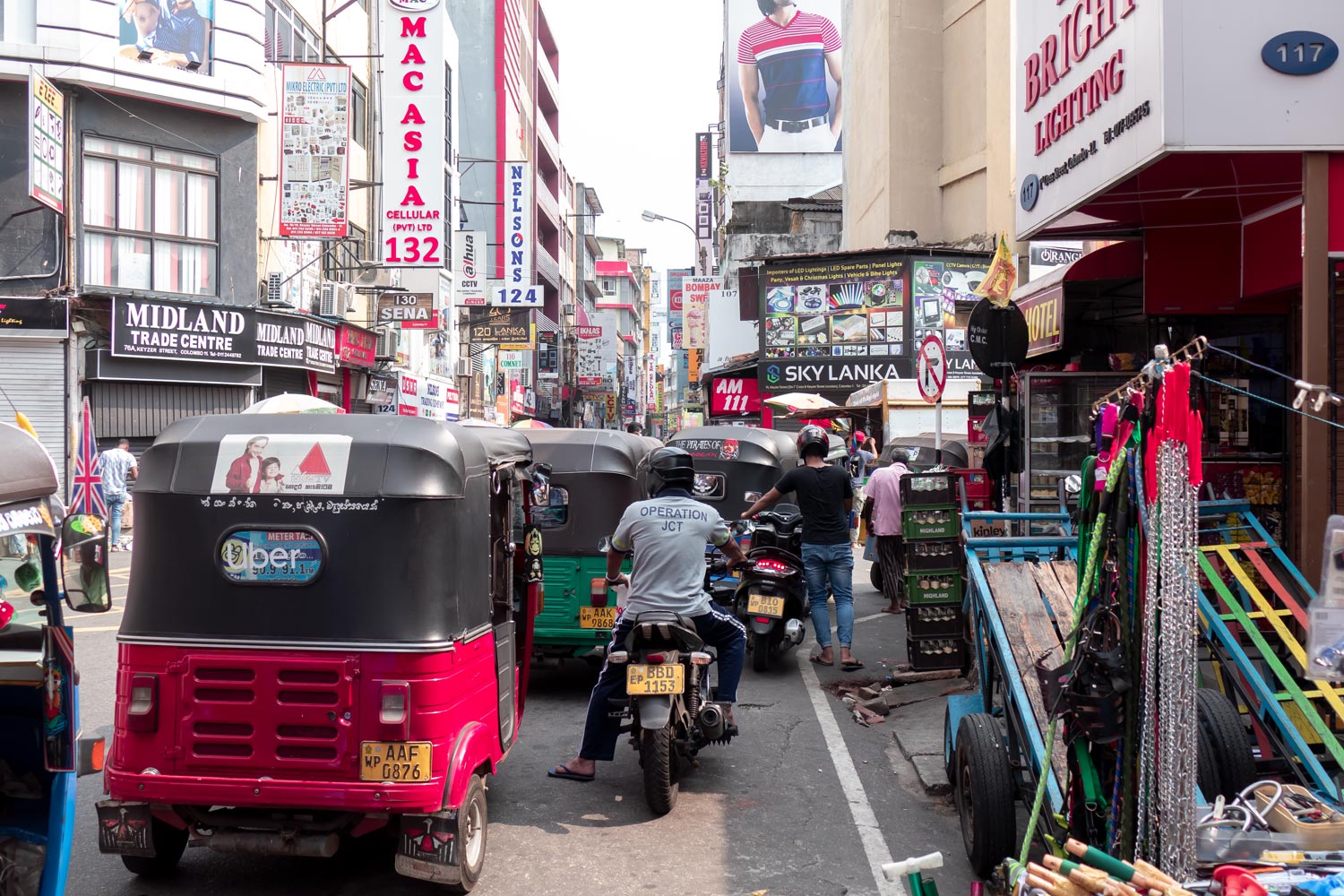
Interestingly, among this chaos, someone came up with the idea of painting a waffle iron on the road. Who and why needs it here is a mystery.
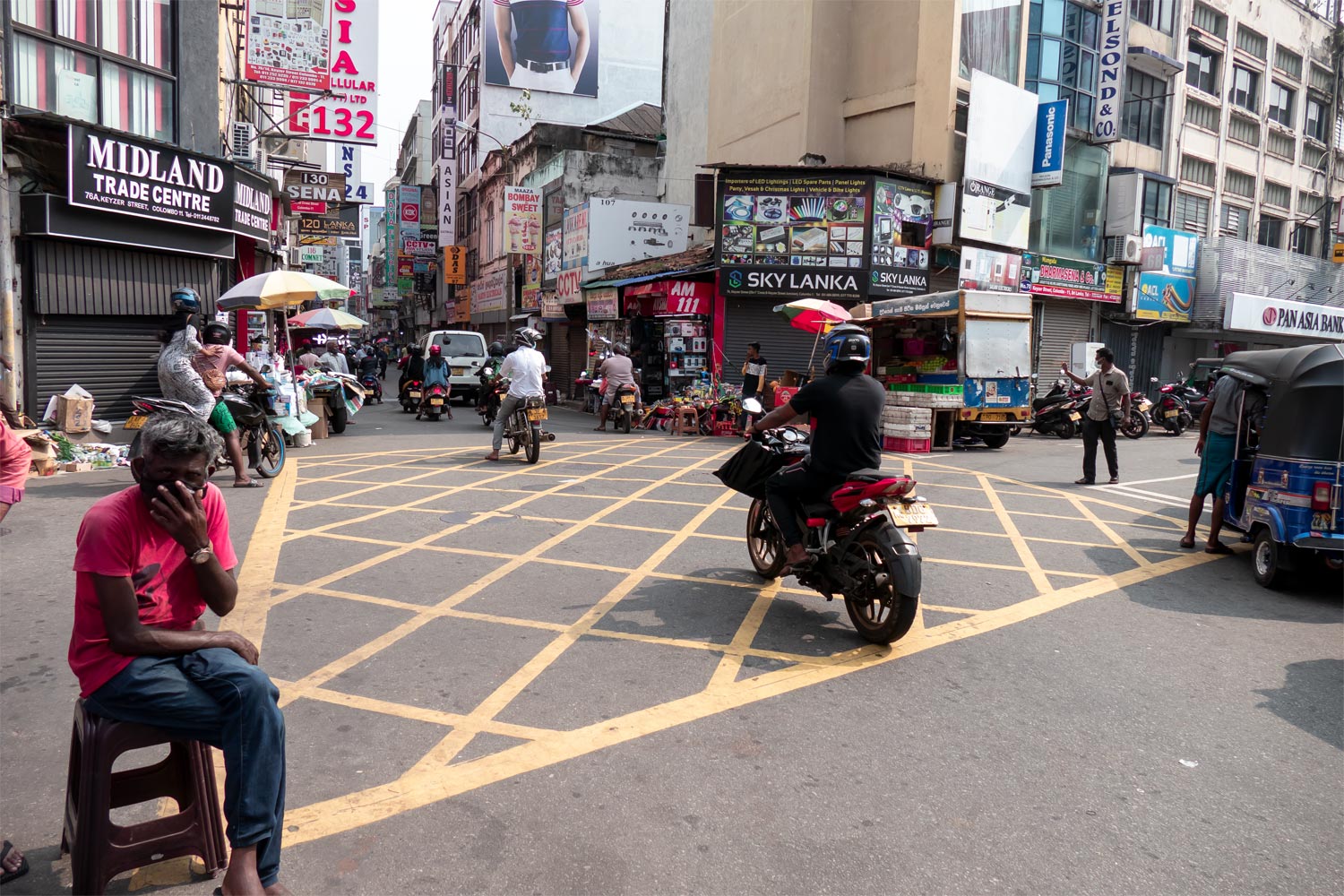
People already walk on the road if necessary. Spontaneous traffic is not as chaotic as it seems. It lives by its own rules, which are no worse than invented traffic rules.
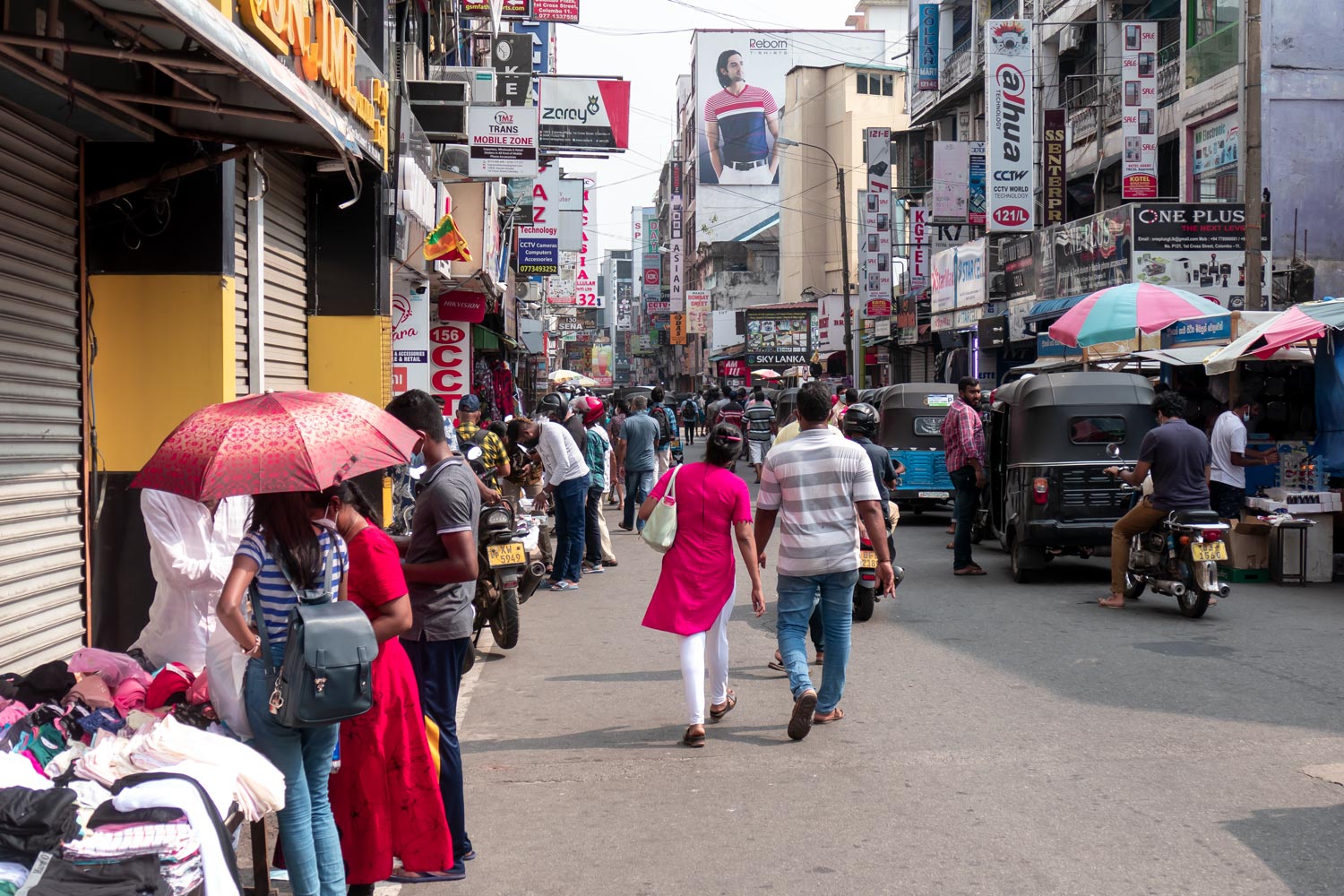
When the traffic flow subsides a bit, it turns out that the streets are quite wide. If tuk-tuks were banned, it would be possible to solve the traffic jam problem. But all attempts to do so have faced strong protests.
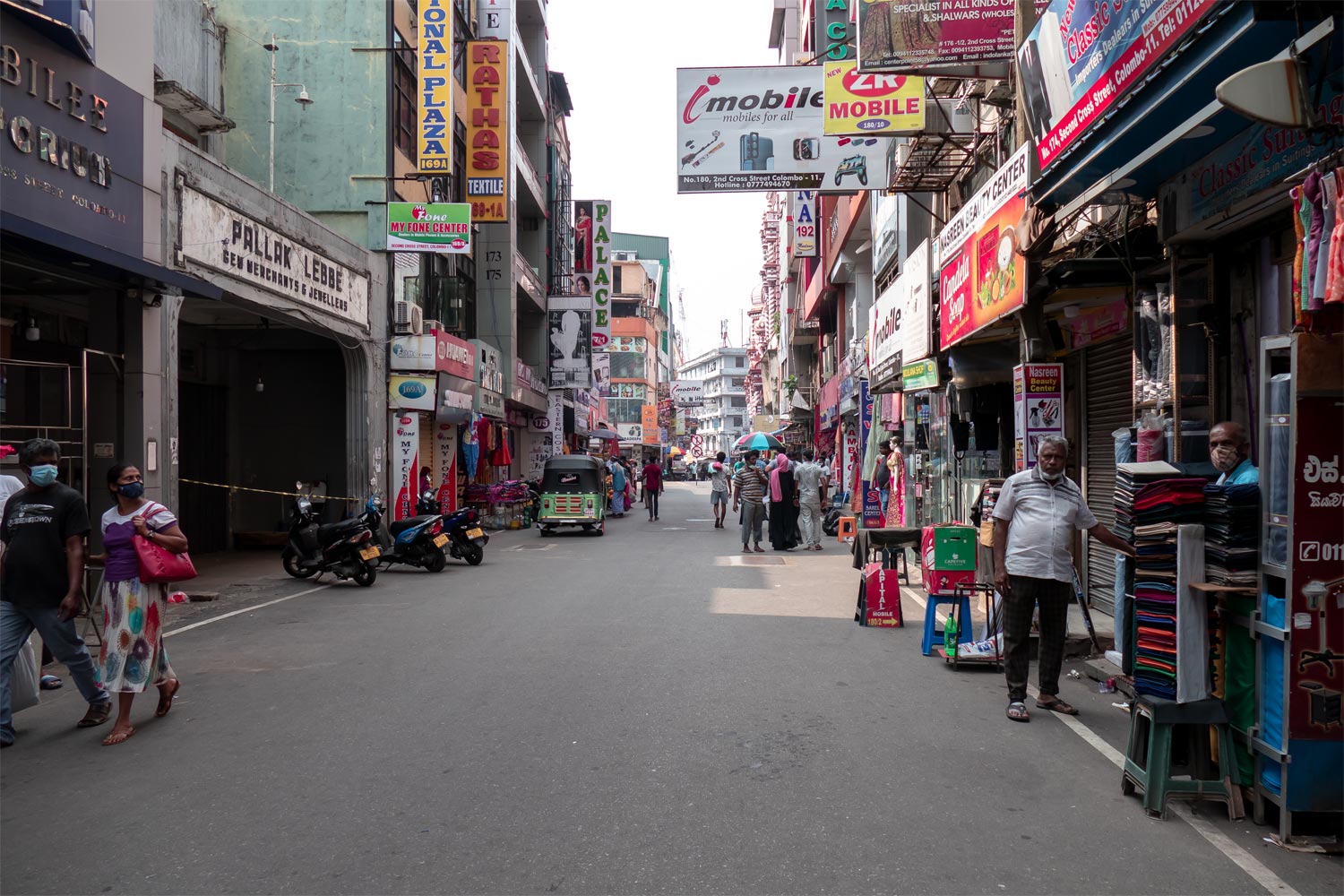
In the middle of the district stands the Red Mosque of Colombo — an absolutely bombastic temple built in 1909. The mosque is wedged in narrow alleys of the city, so it is impossible to shoot its facade, and from the side, it barely fits into the frame.
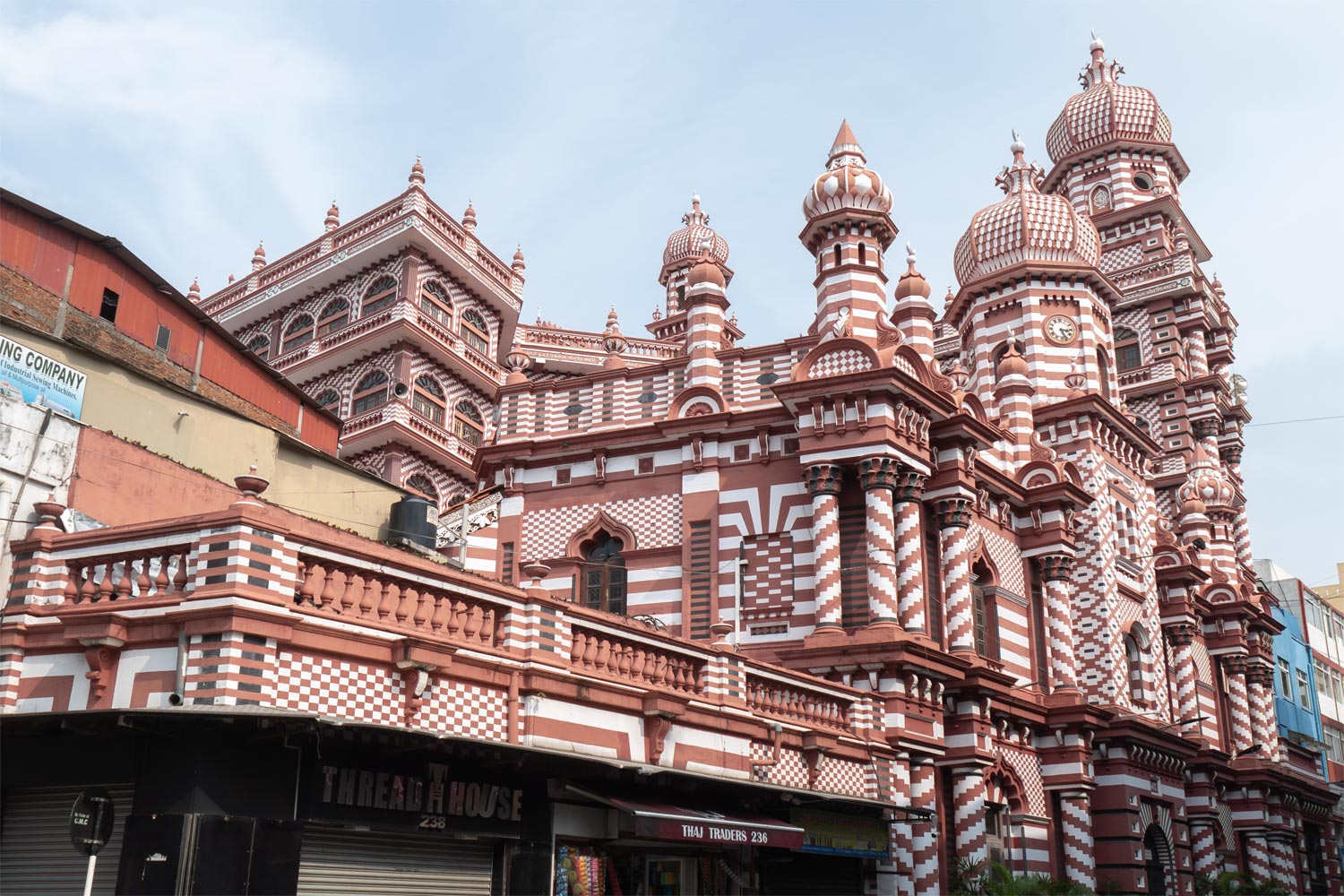
Cool.
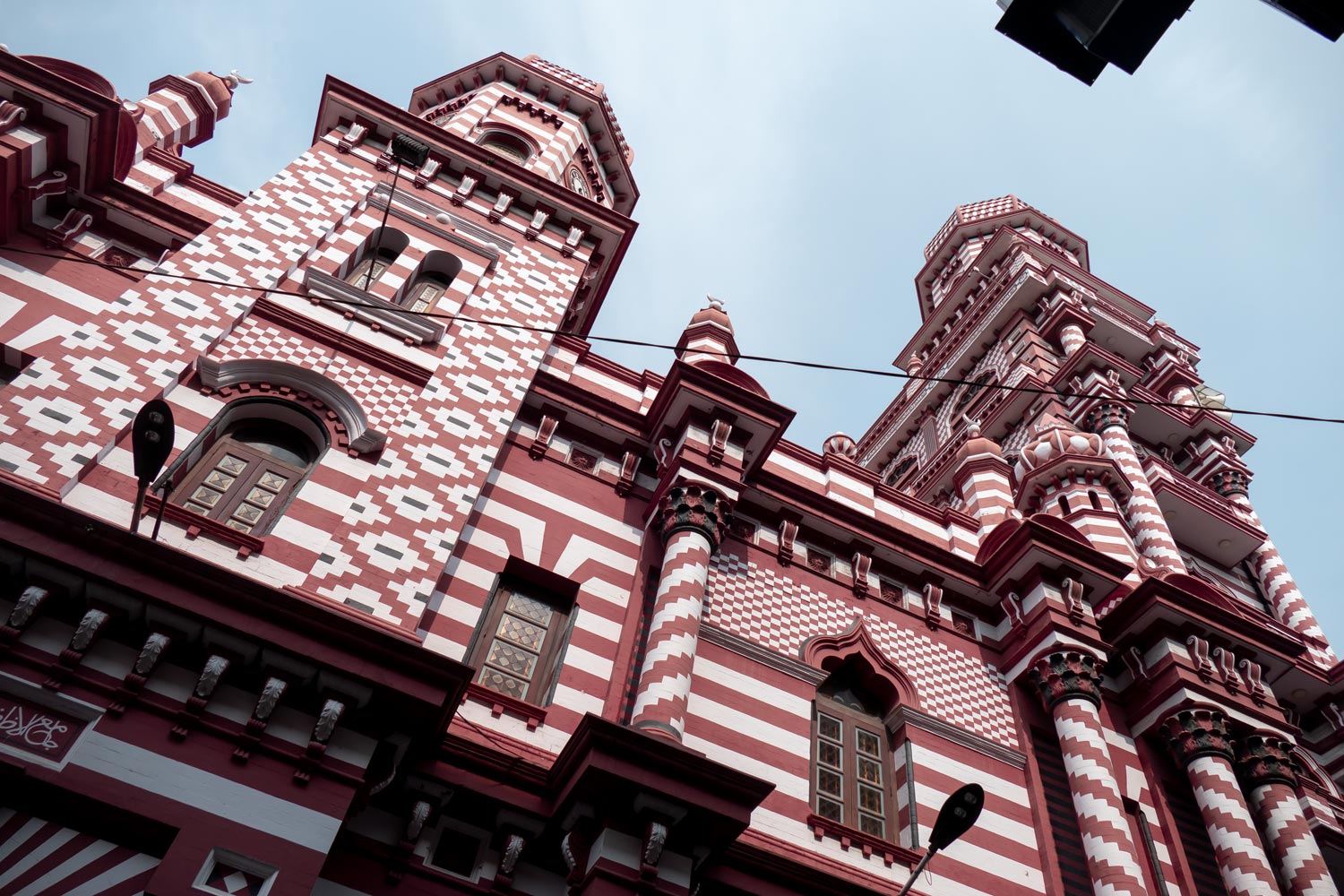
Tourists are not allowed inside.
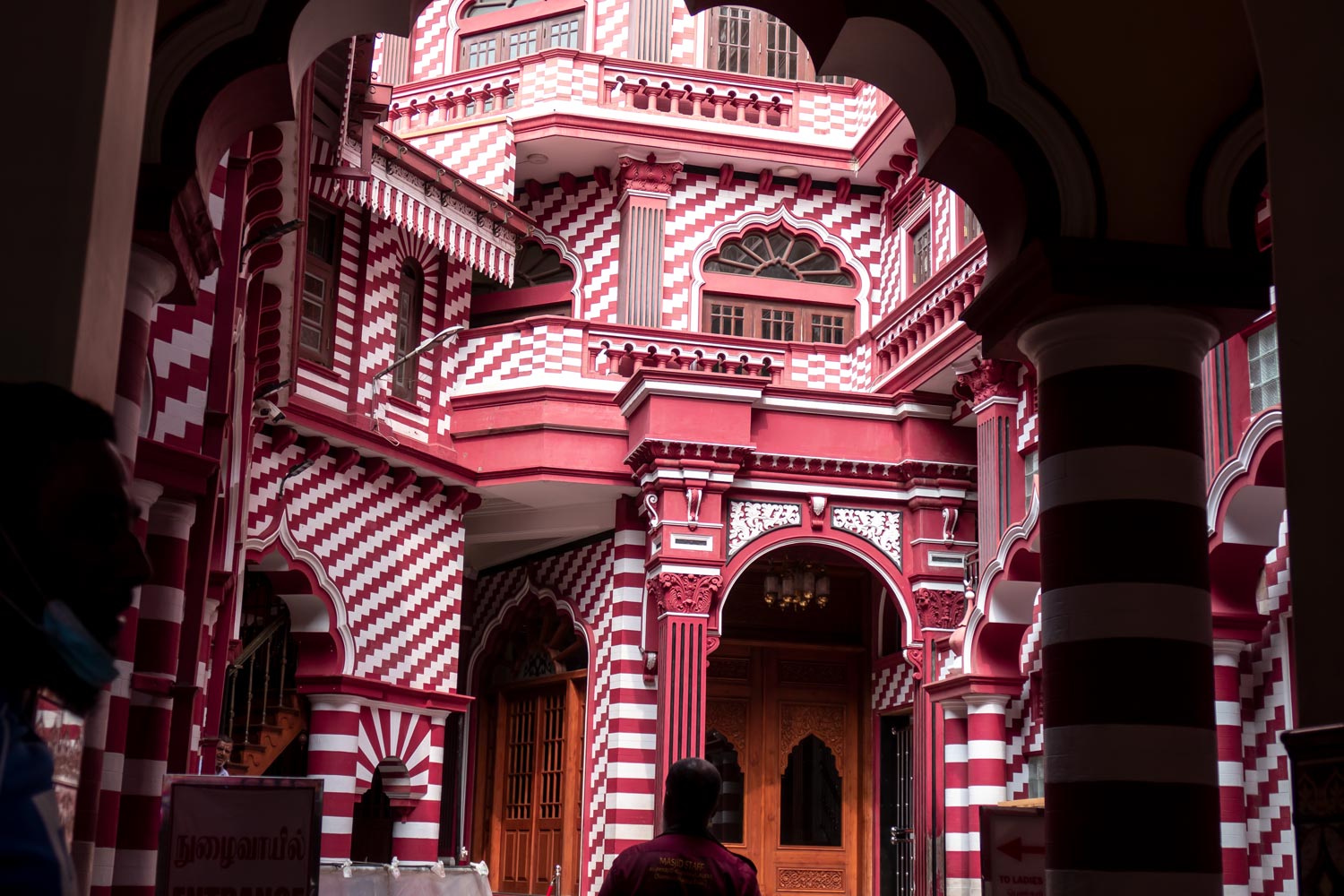
Colombo is a multicultural city. Not far from the mosque, you can find an old Hindu temple.
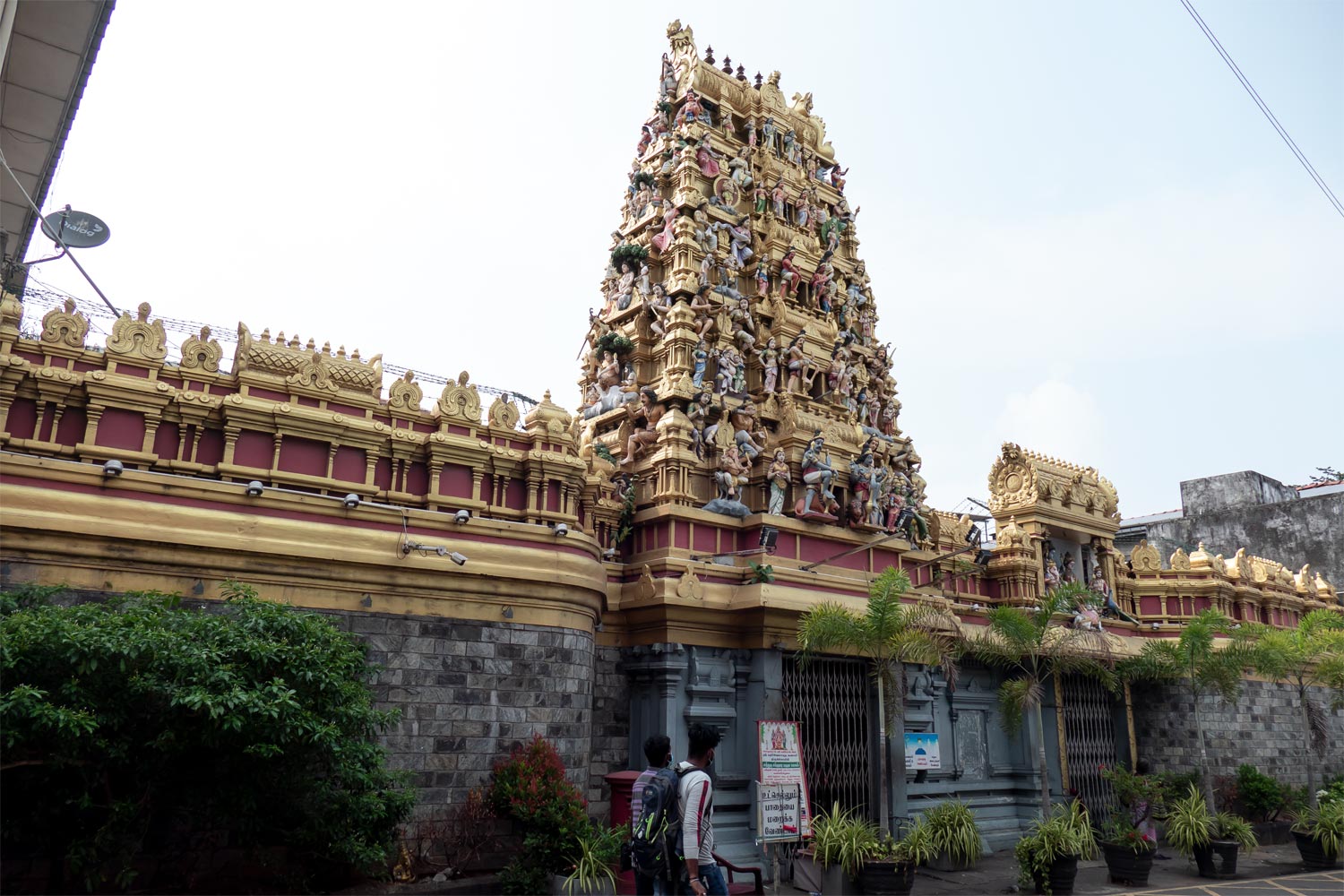
Residential areas of Colombo are reminiscent of some neighborhoods in New Delhi, but nowhere in the city is there as much hustle, dirt, and chaos as in the capital of India.
On the contrary, Colombo gives the impression of a progressive city, although it is far behind civilization. It is more like the beginnings of Bangkok or Seoul. Perhaps when Sri Lanka recovers from default, Colombo will begin to develop rapidly.
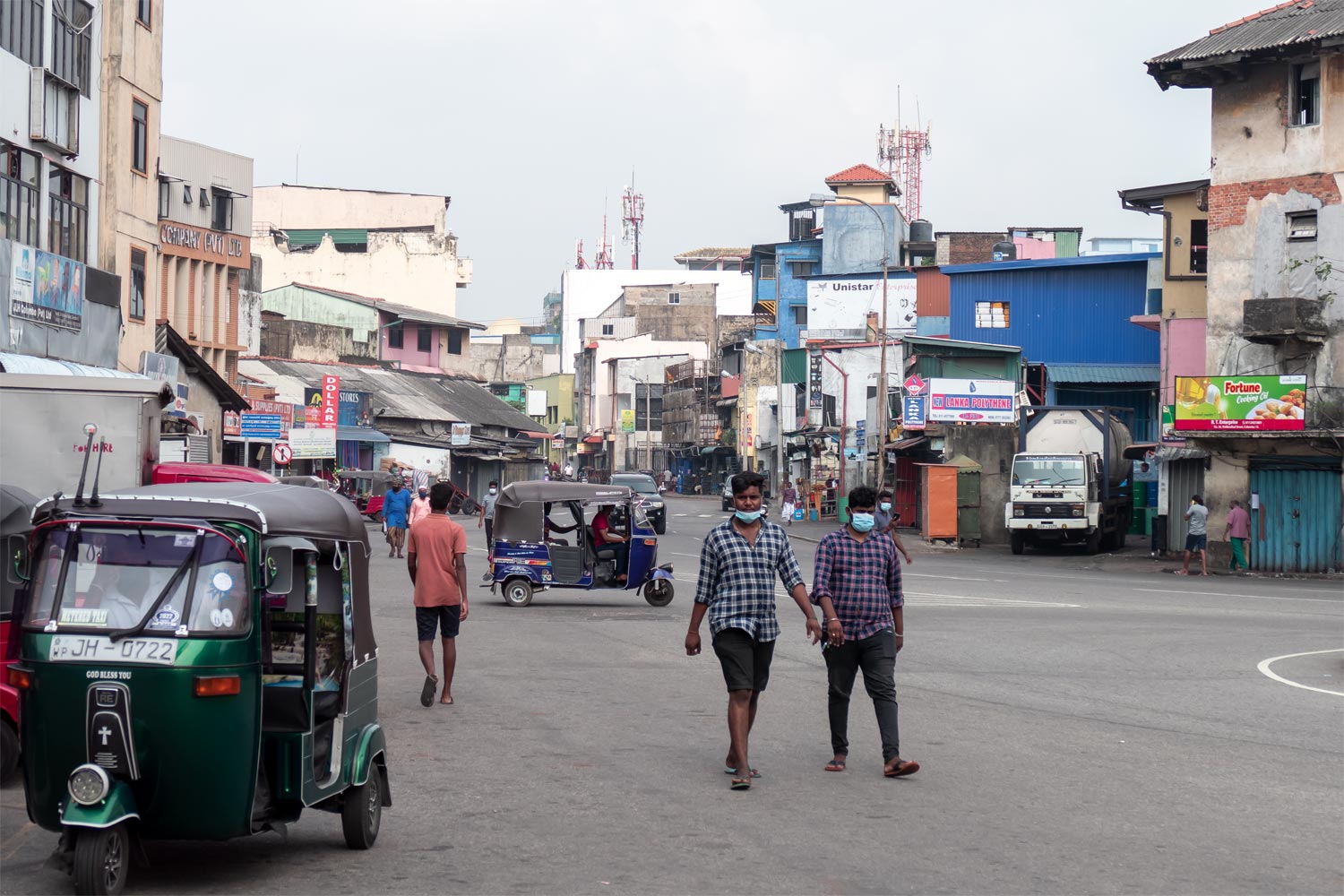
For now, there is nothing left to do but suffer from the heat and admire the remnants of colonial architecture.
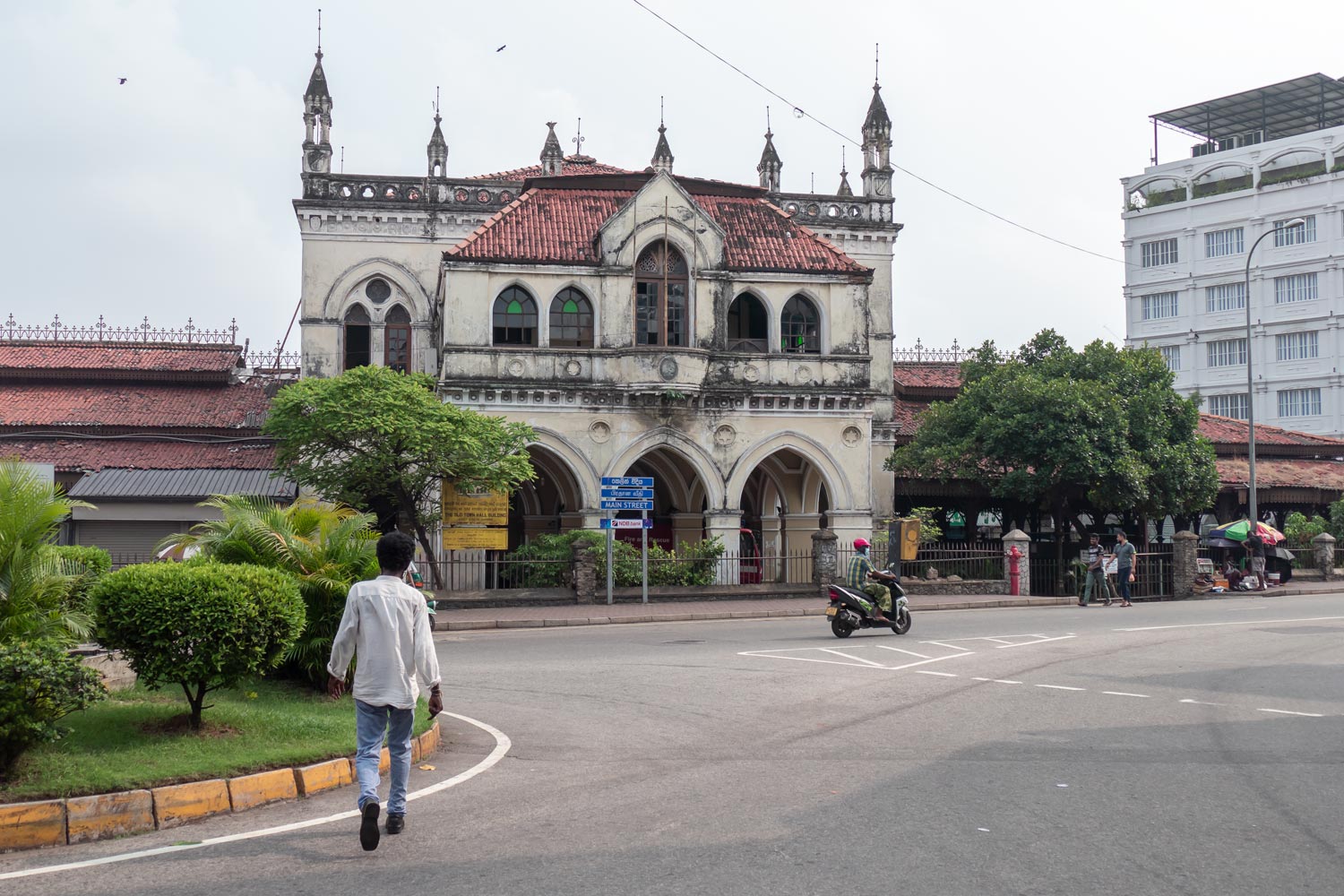
The capital
In fact, Colombo is not the actual capital of Sri Lanka. The government sits in a city with the insane name of Sri Jayawardenepura Kotte. Or just Kotte.
In essence, Kotte is a couple of elite neighborhoods not far from Colombo. In the middle of them, there is a large vacant field. In the distance, you can see a roof in Chinese style.
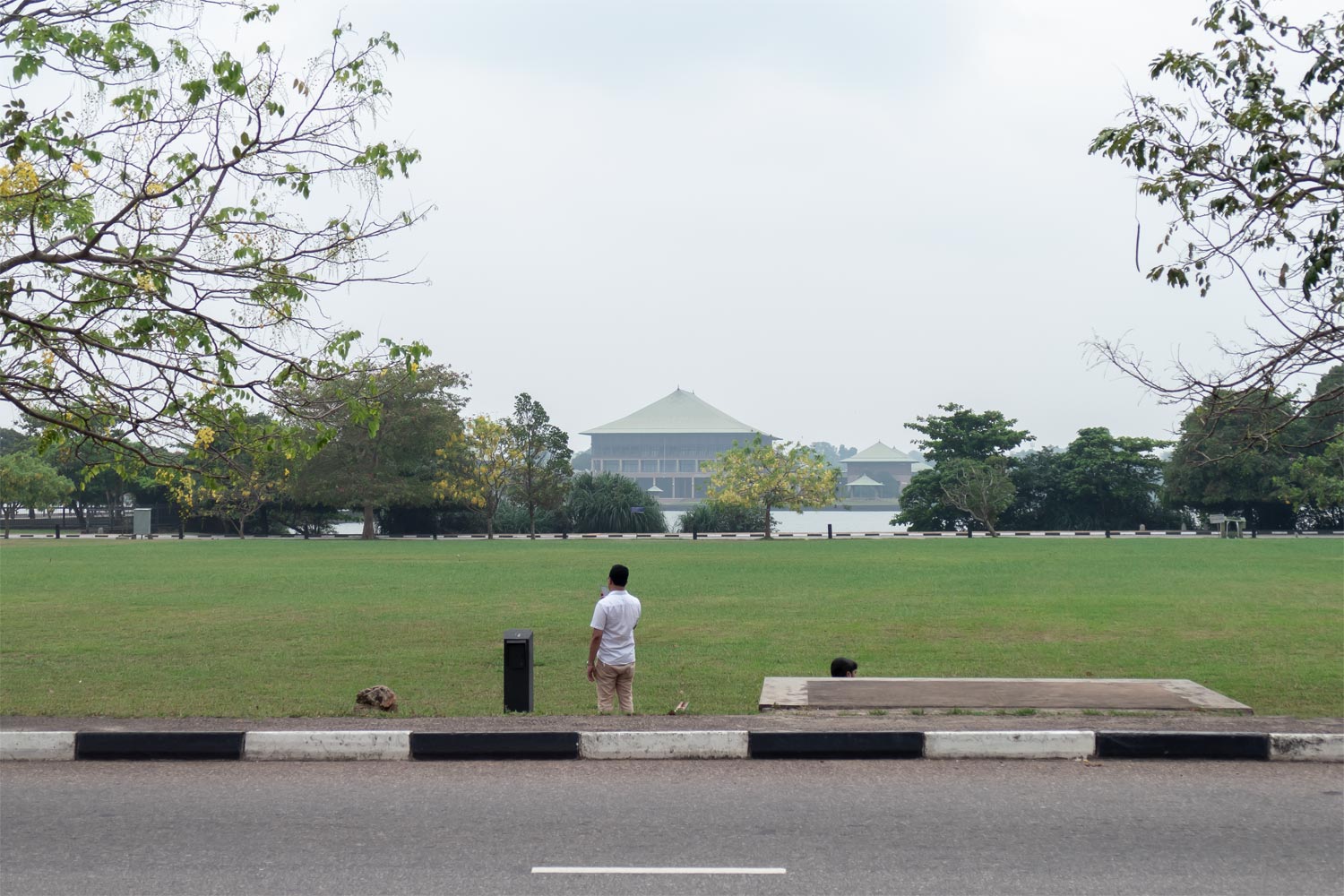
That’s the Government palace. It is surrounded by a moat around its perimeter, and it is impossible to approach it. You can only take a photograph of it using a telephoto lens.
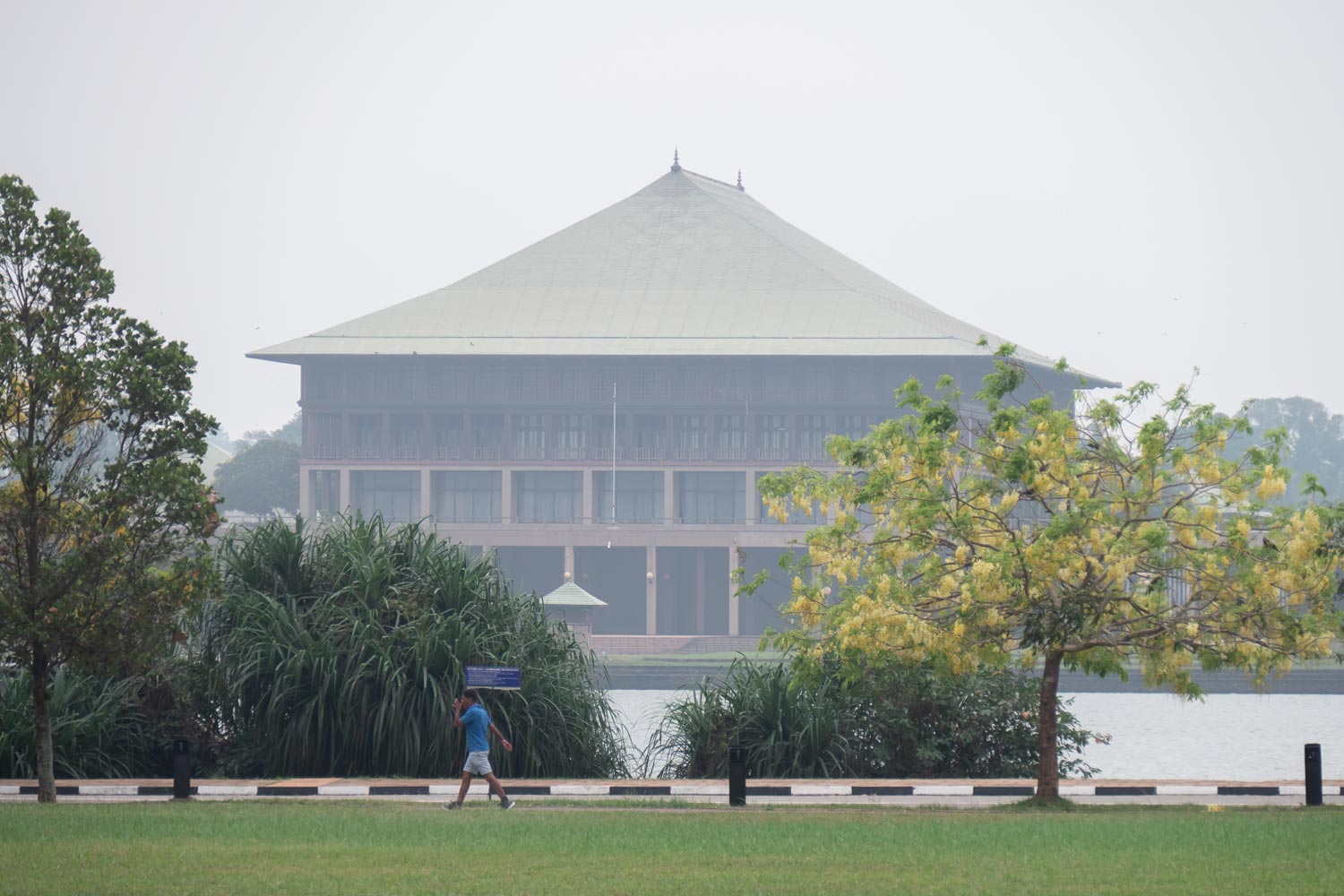
Such a People’s Socialist Republic.


